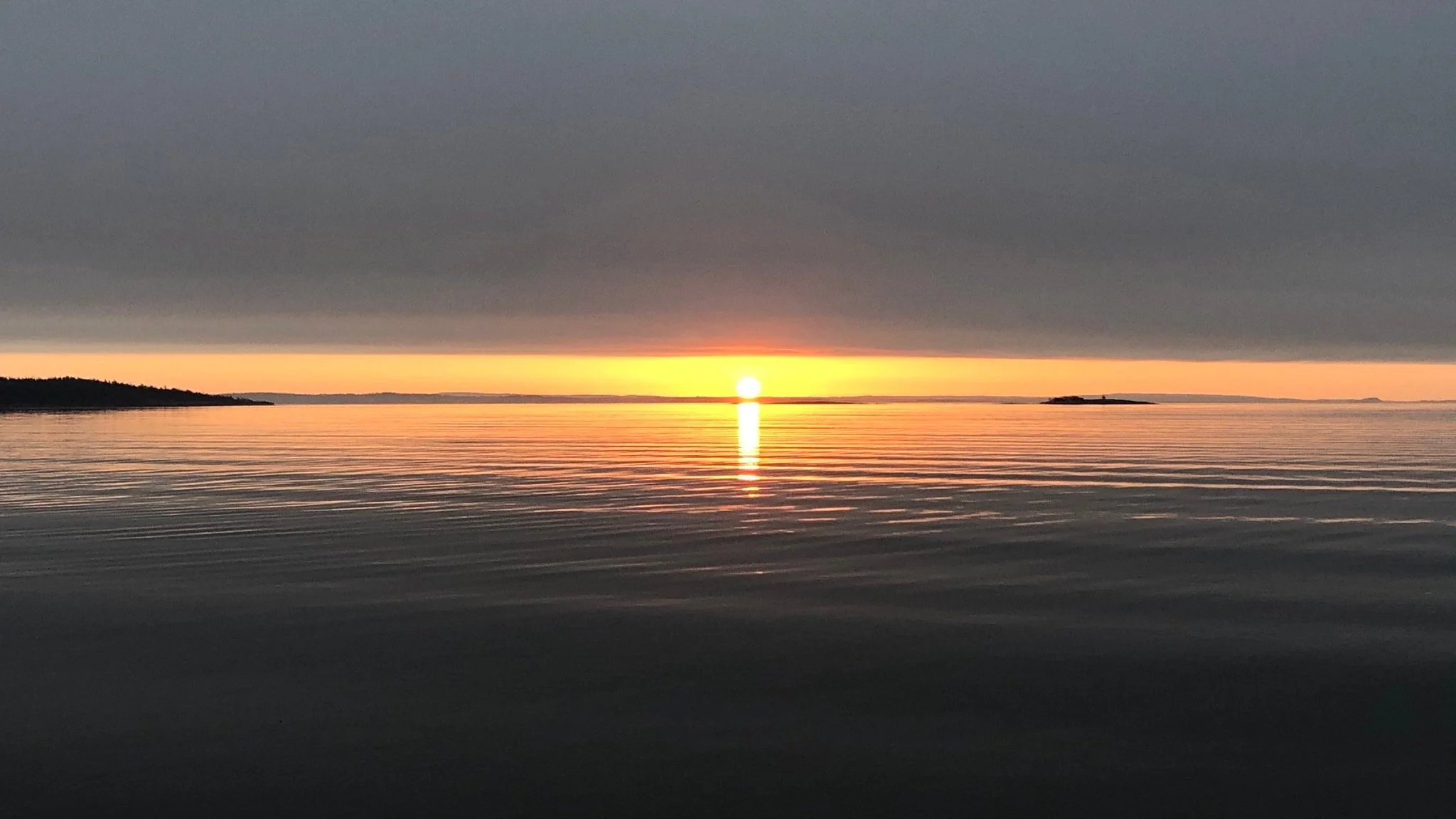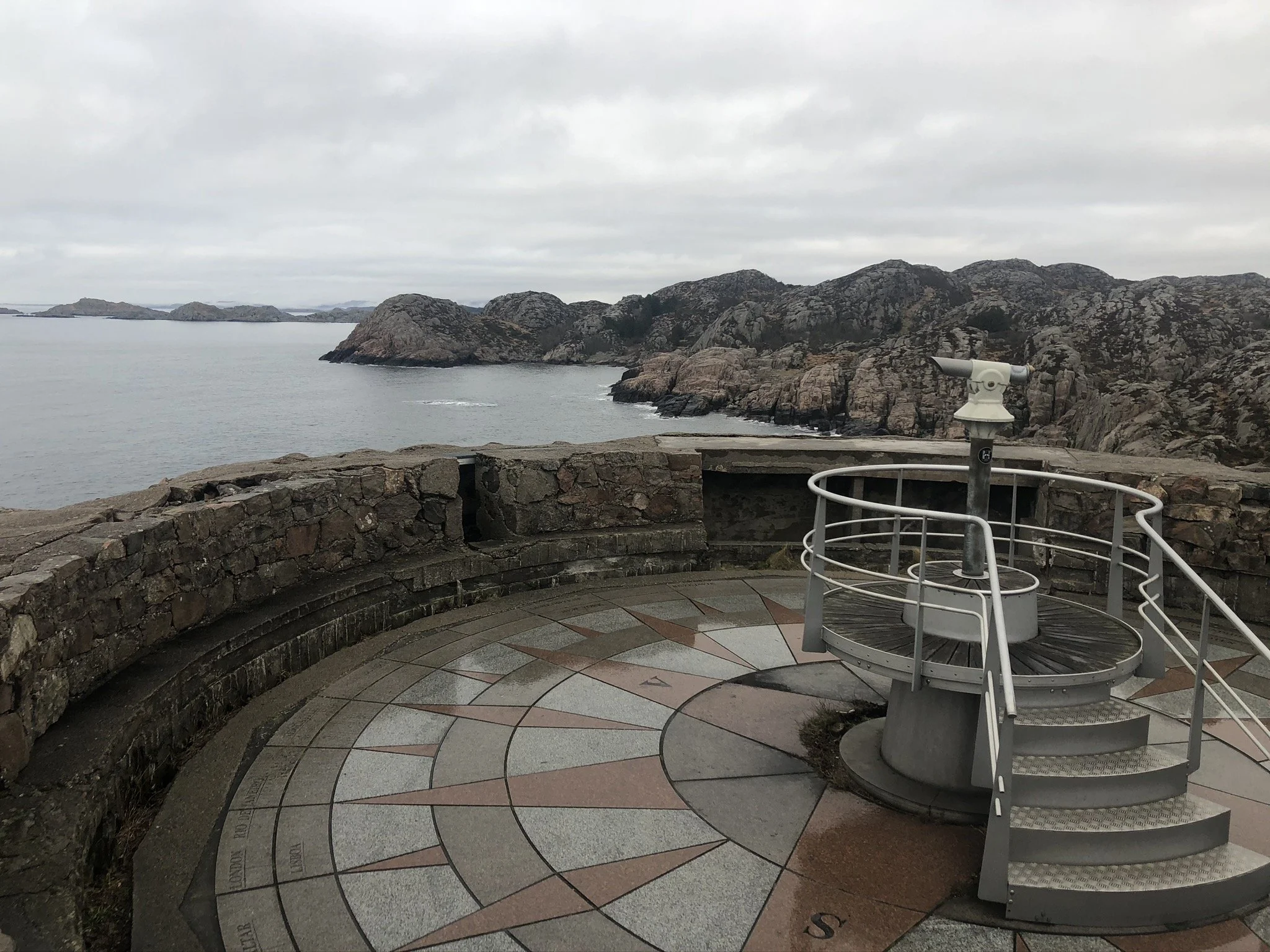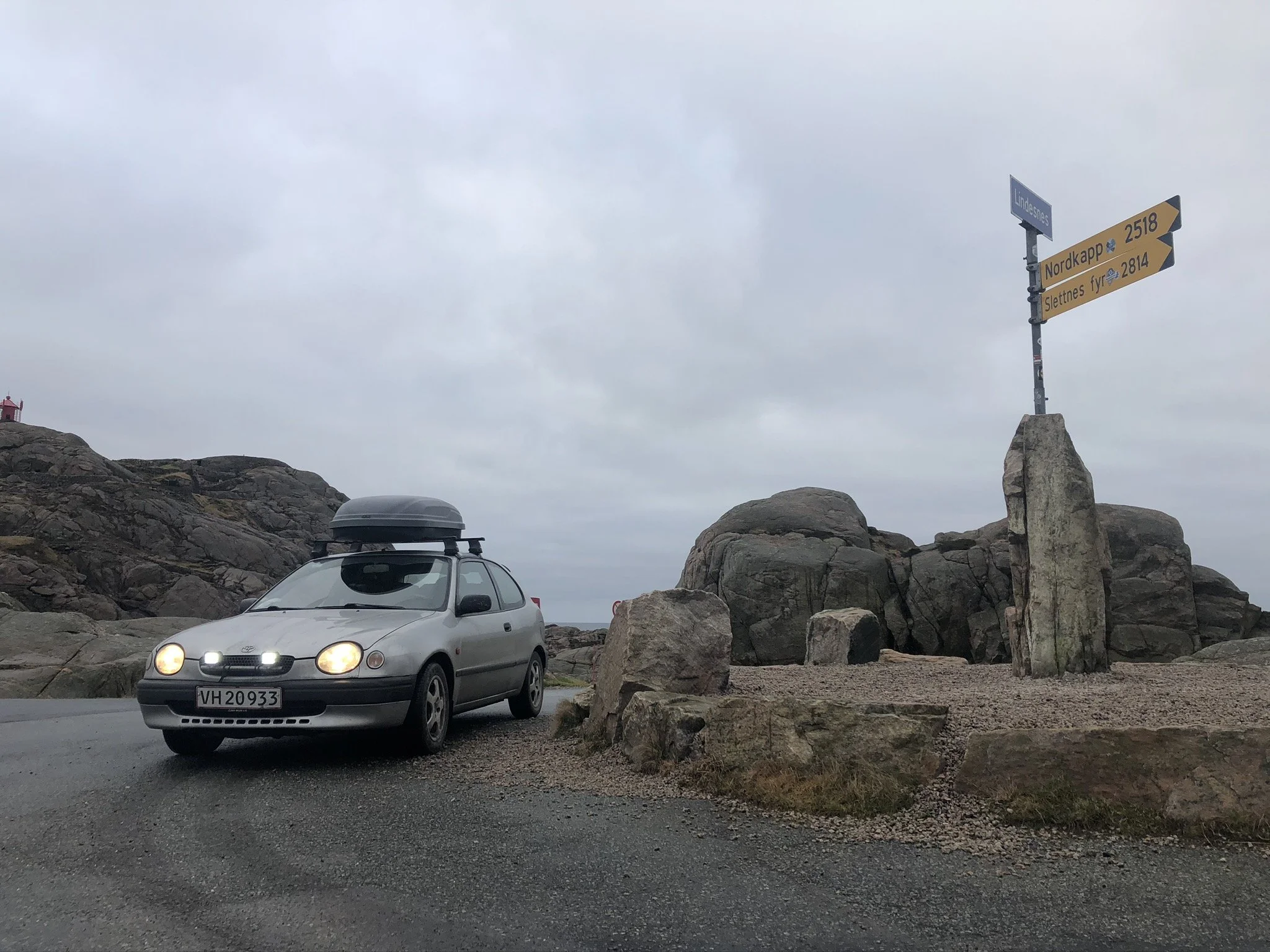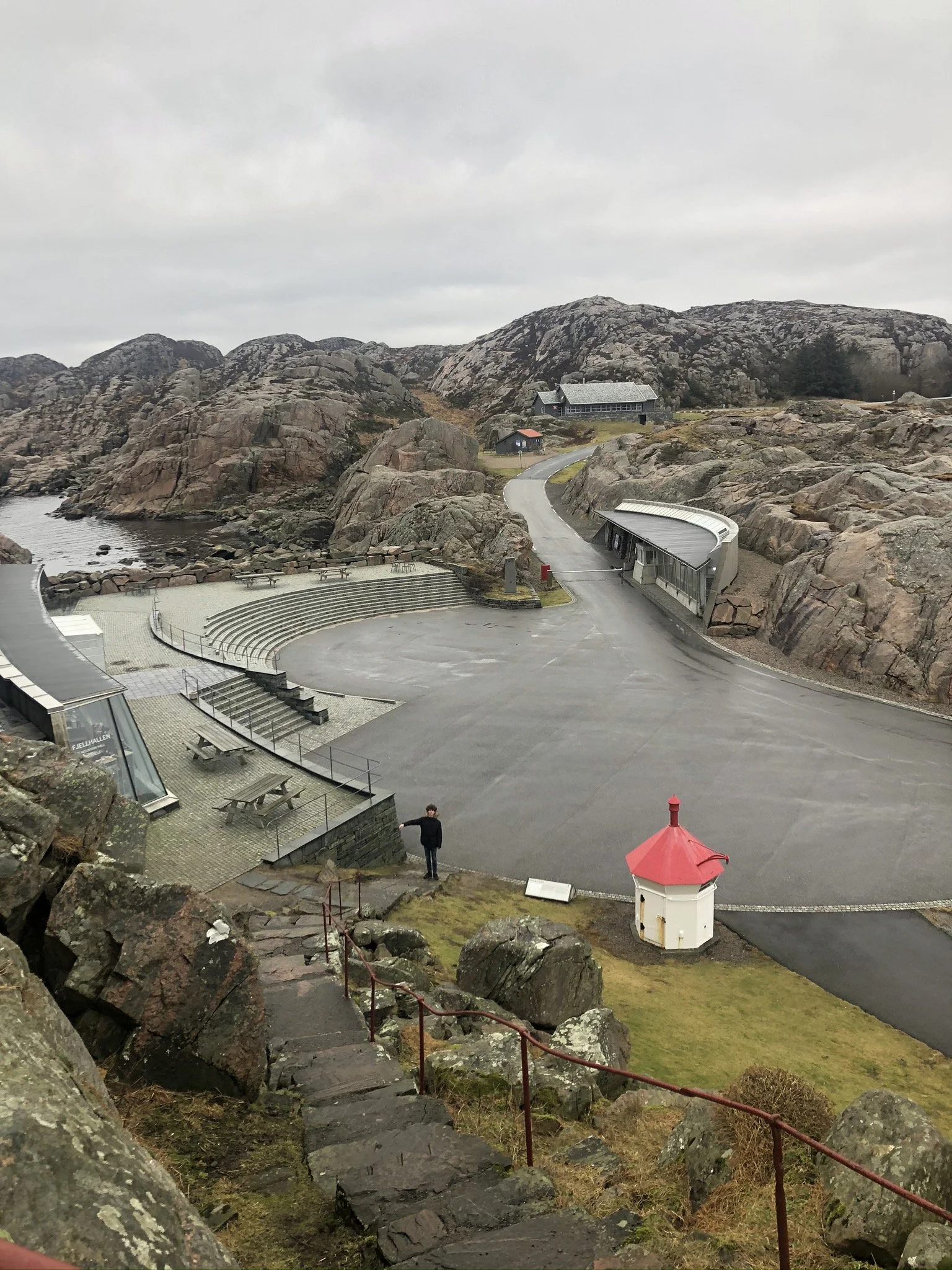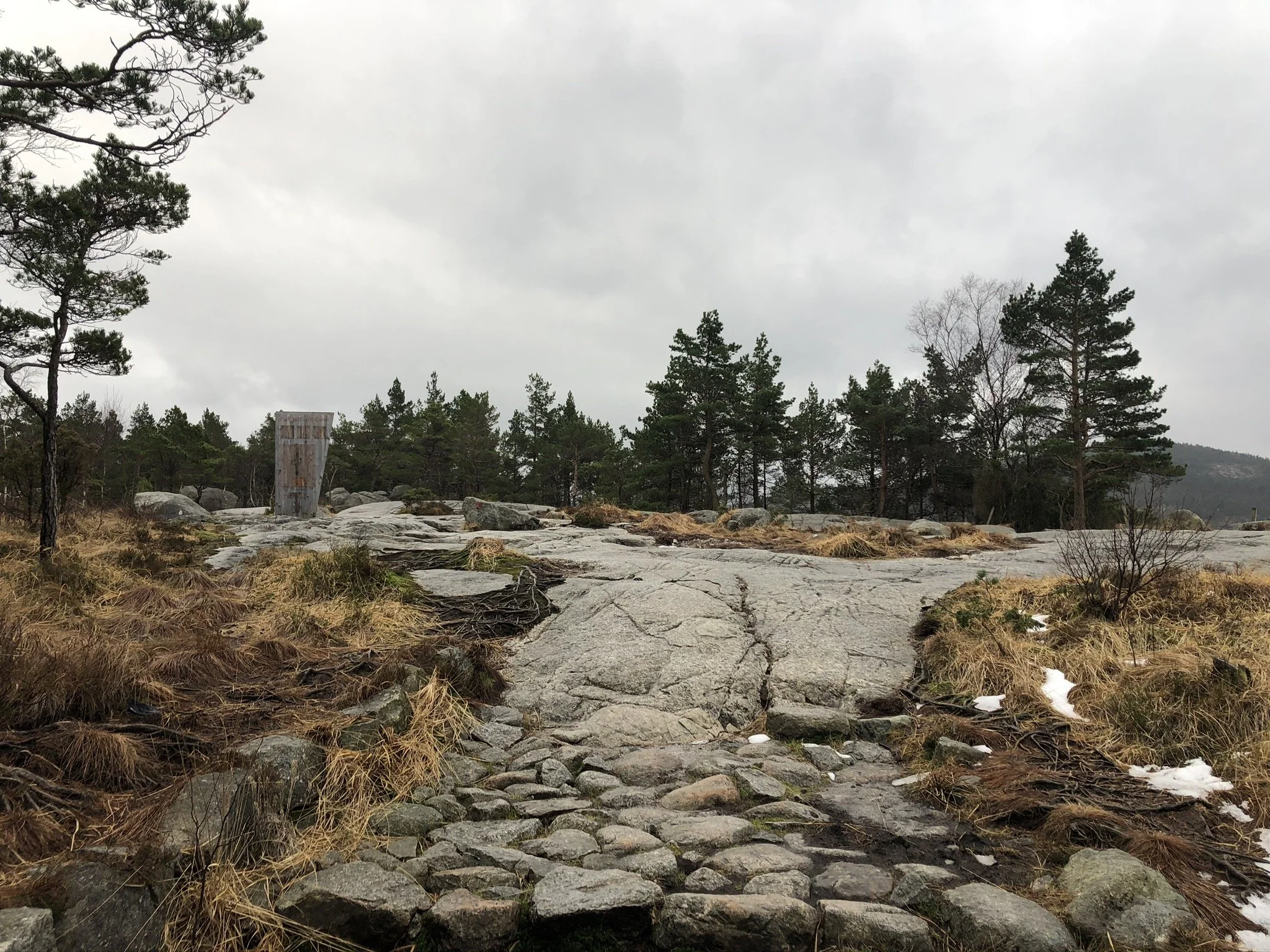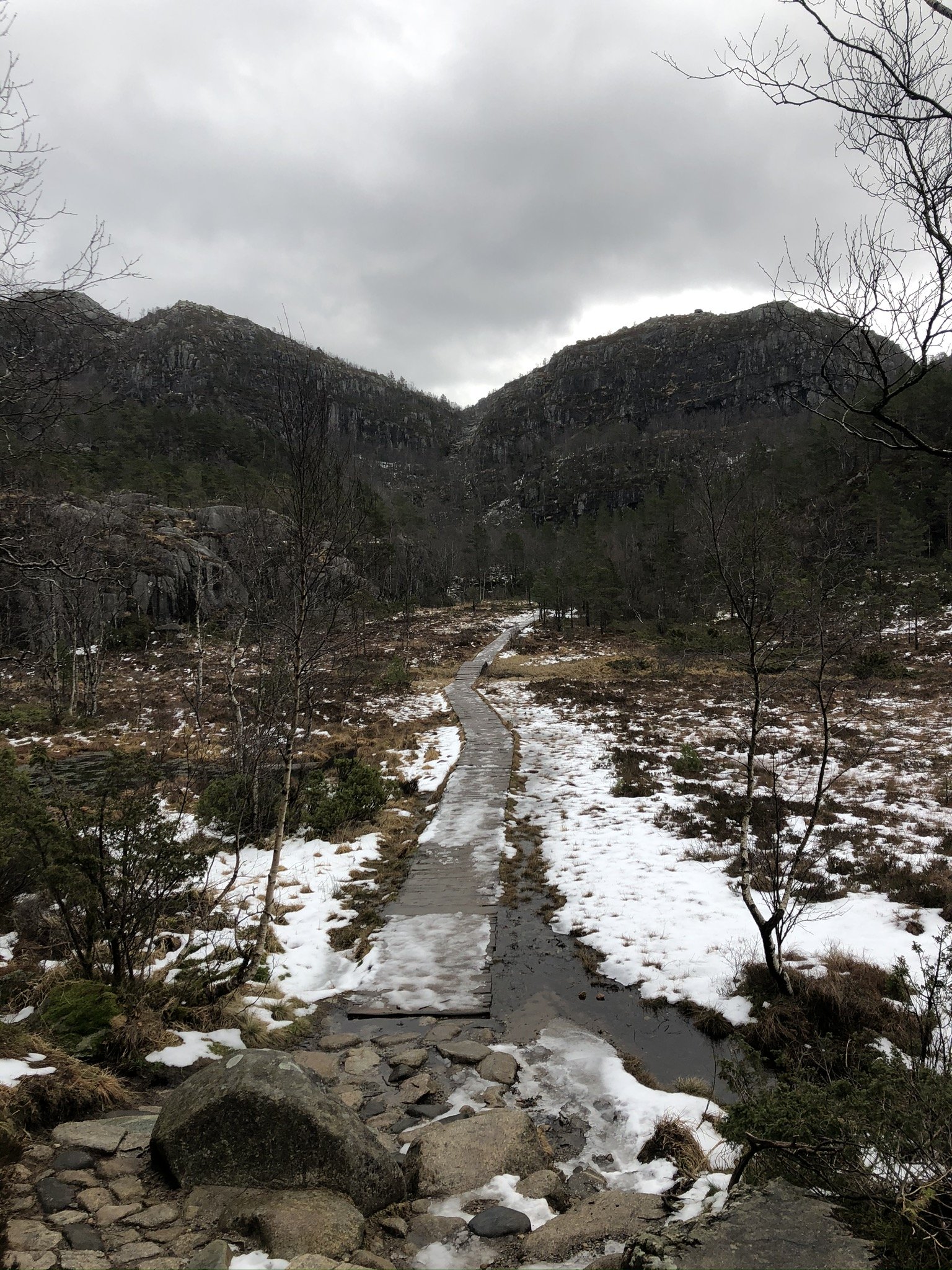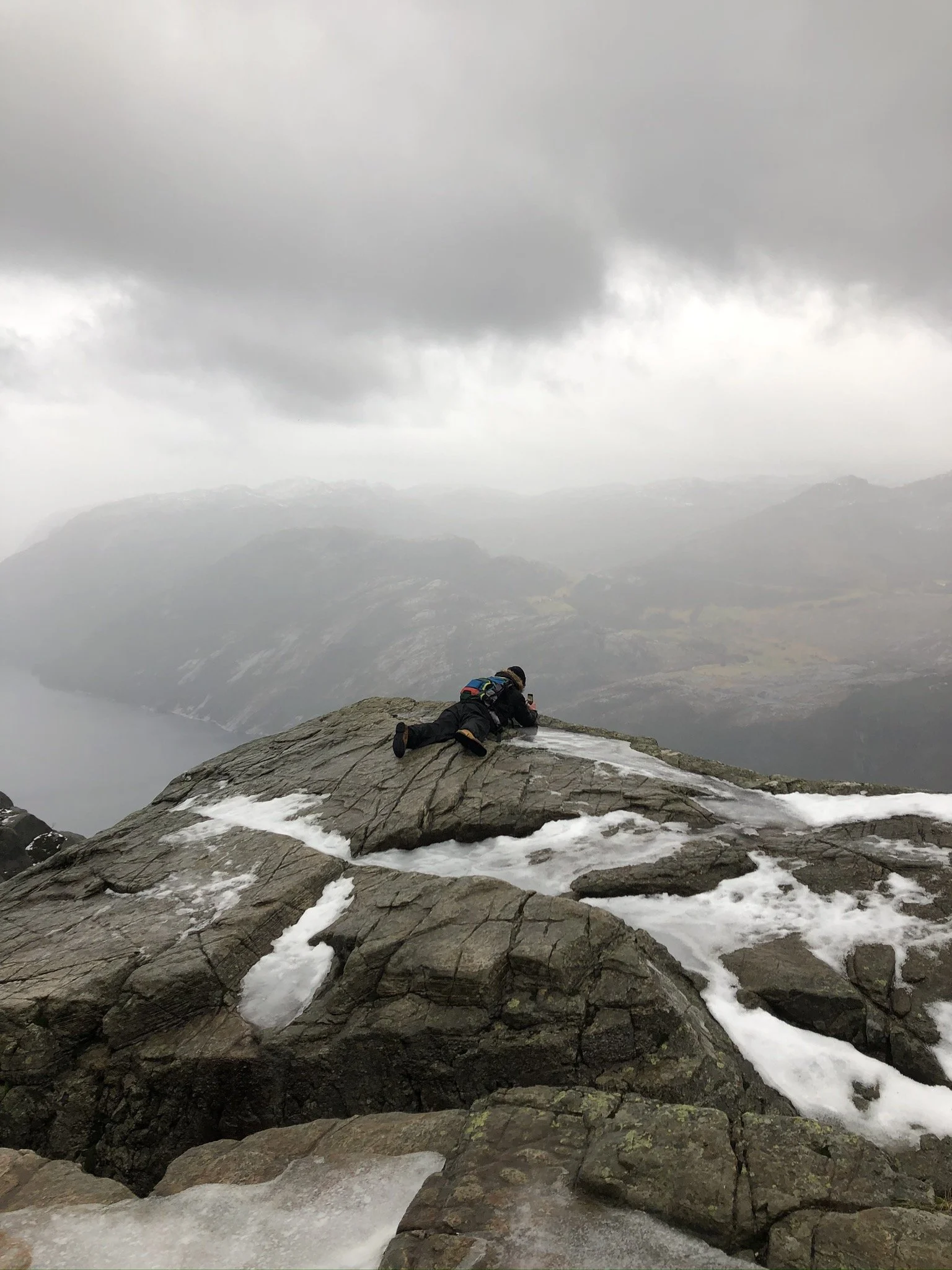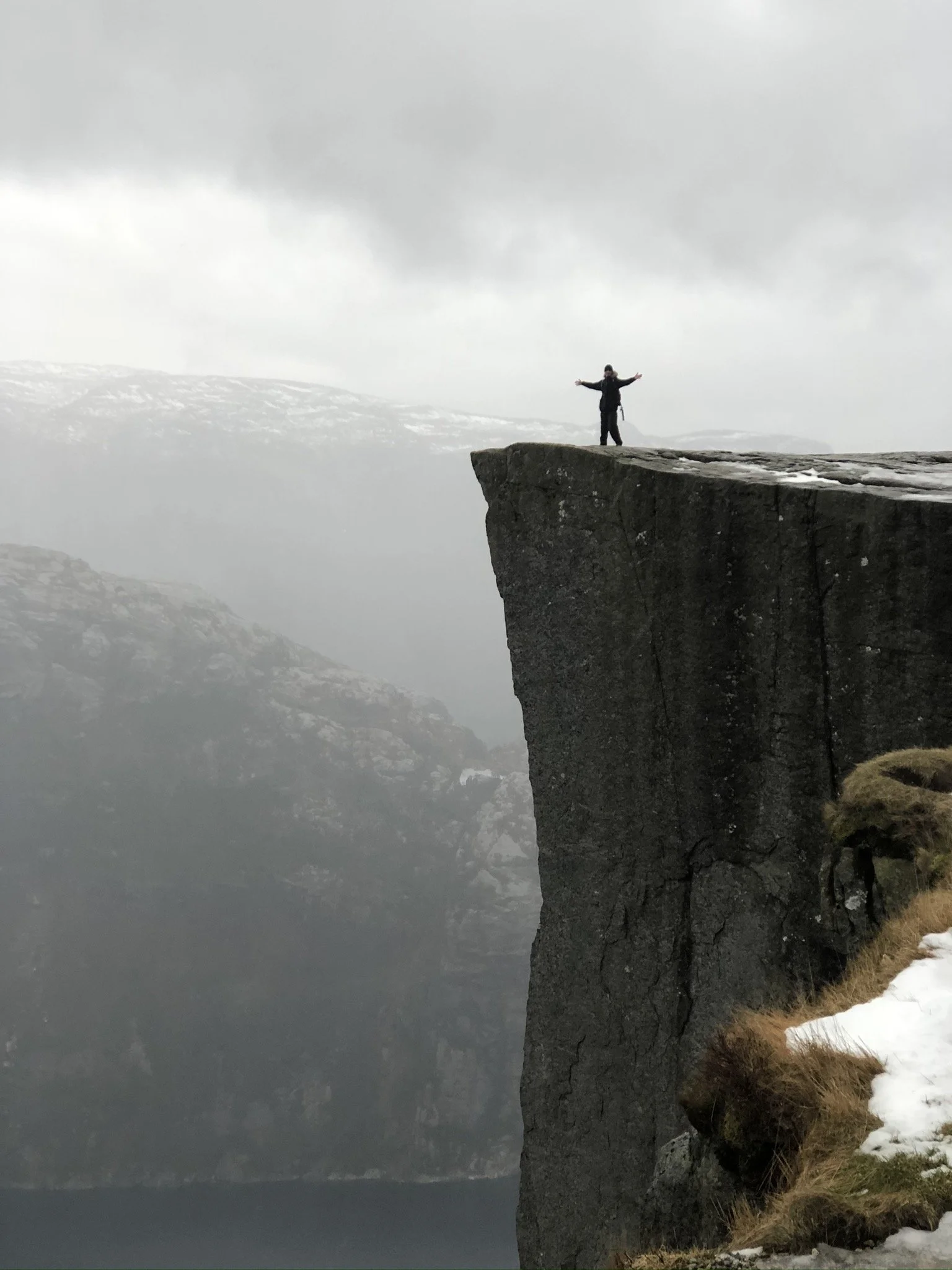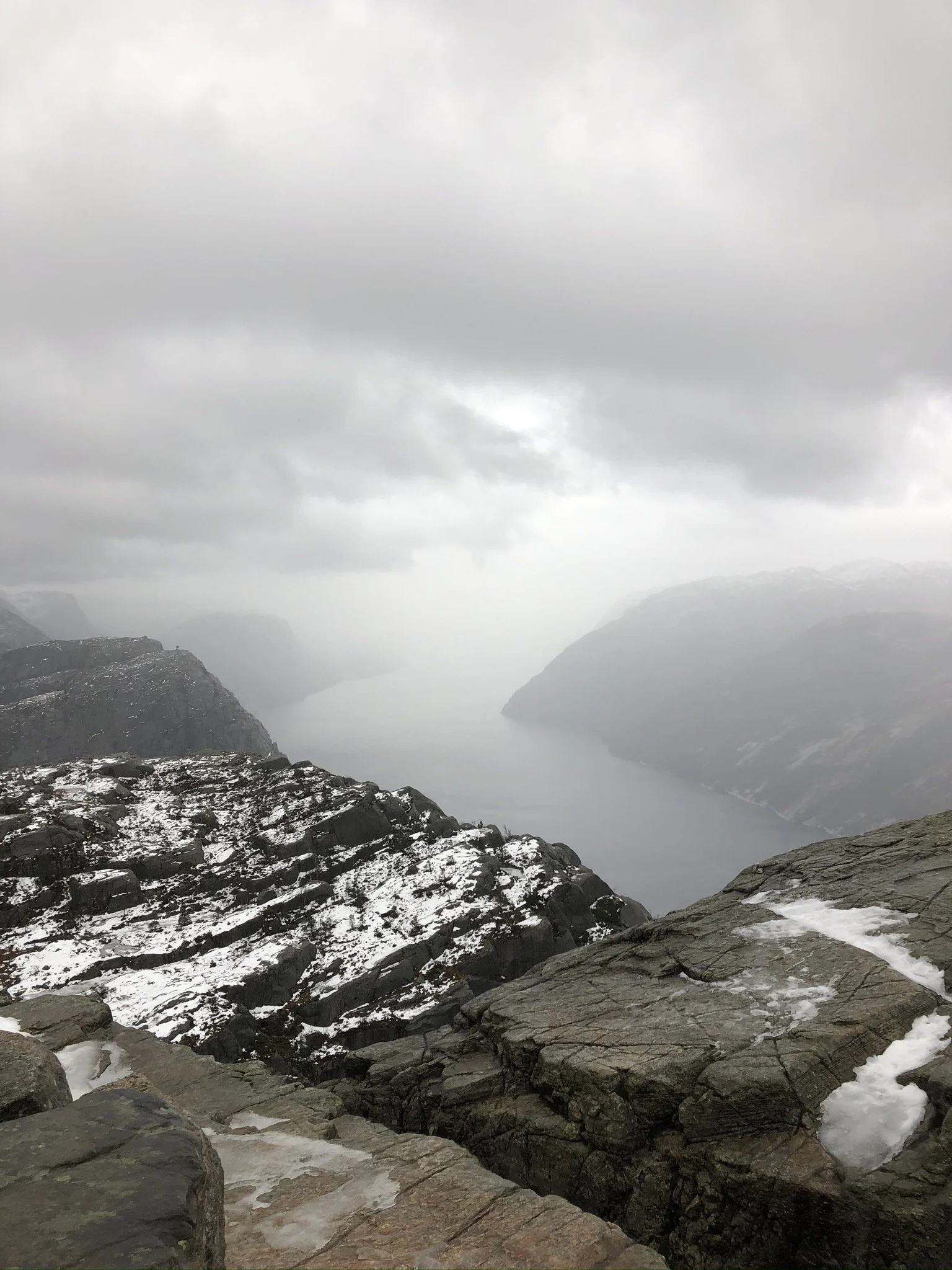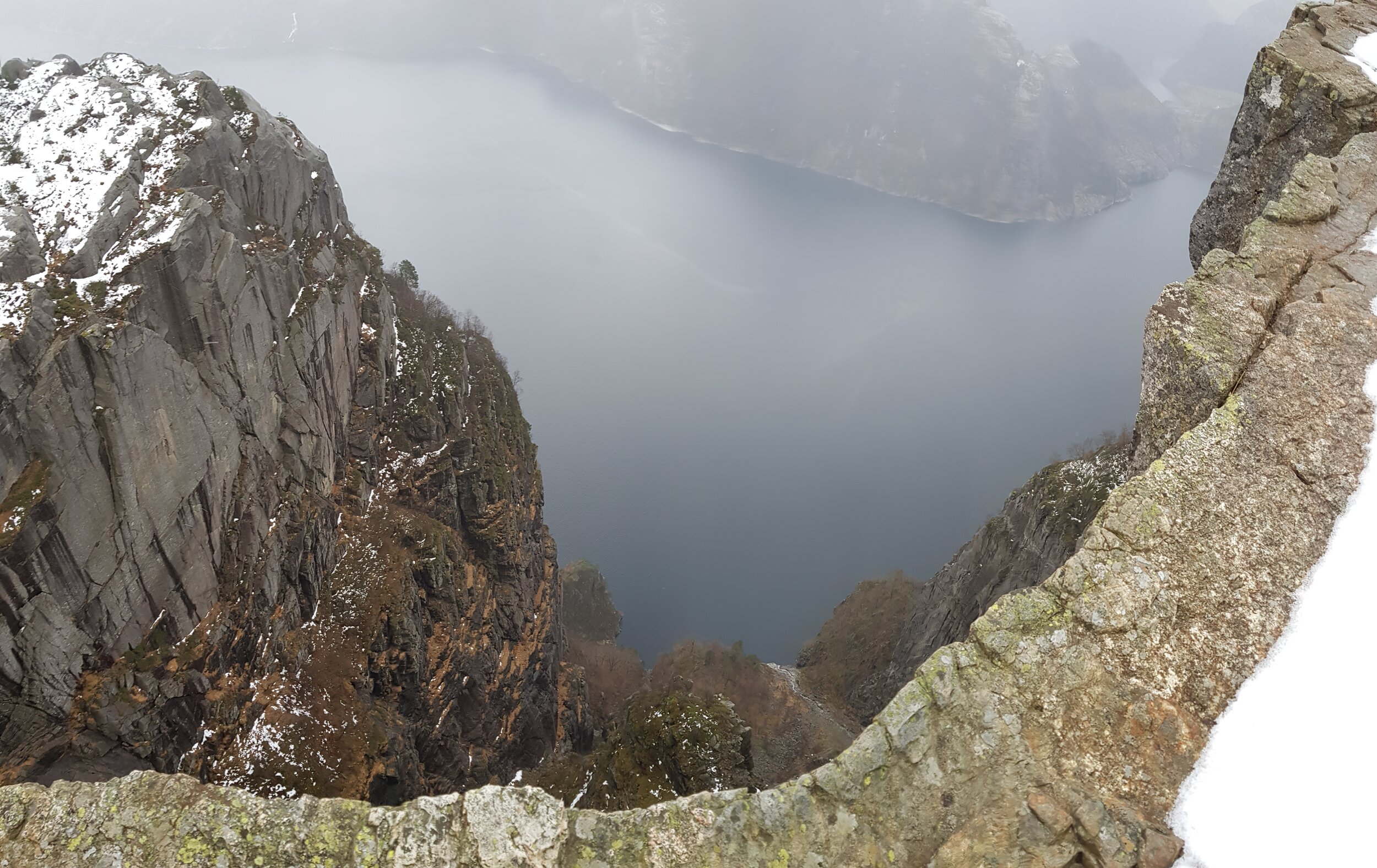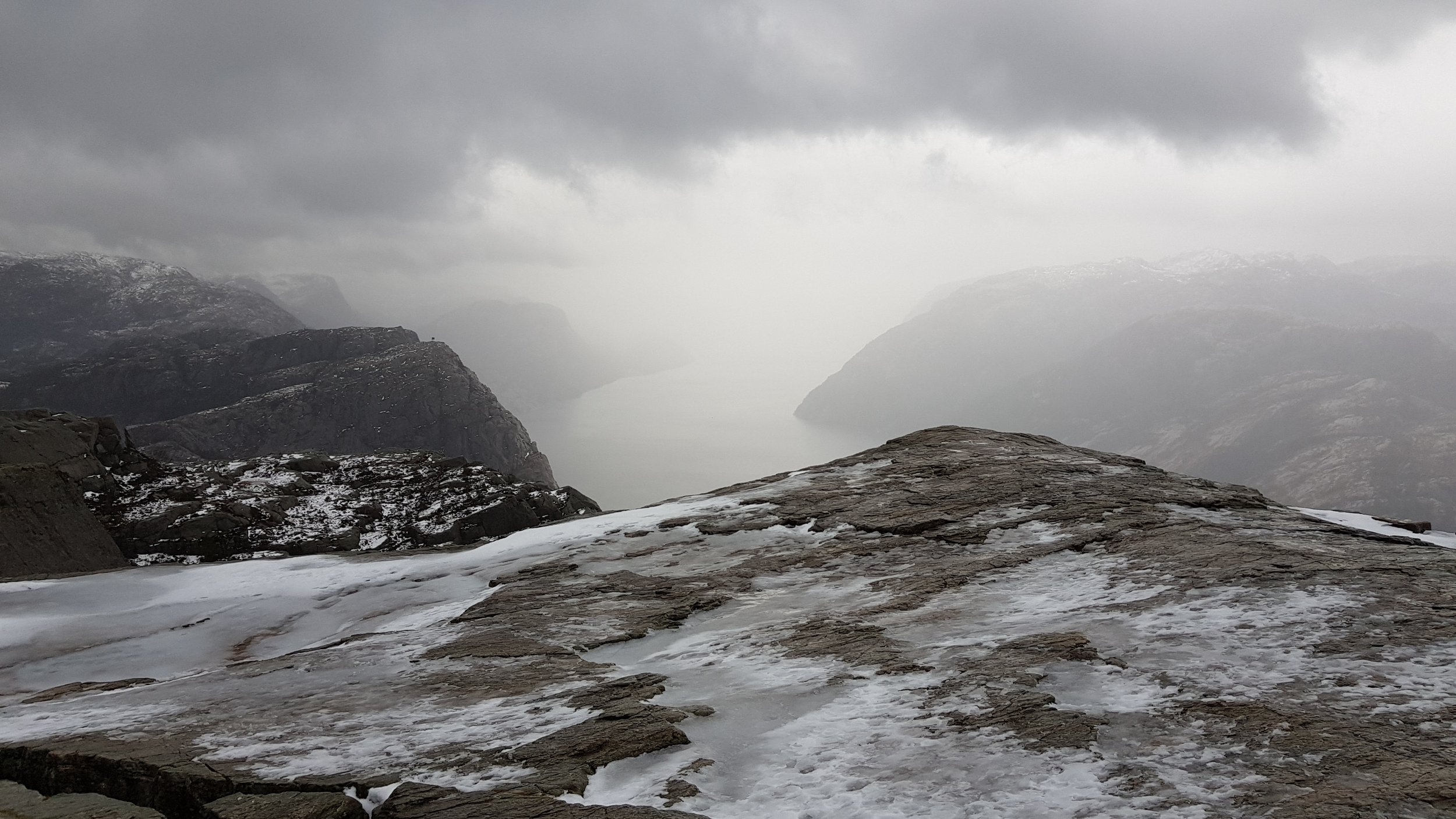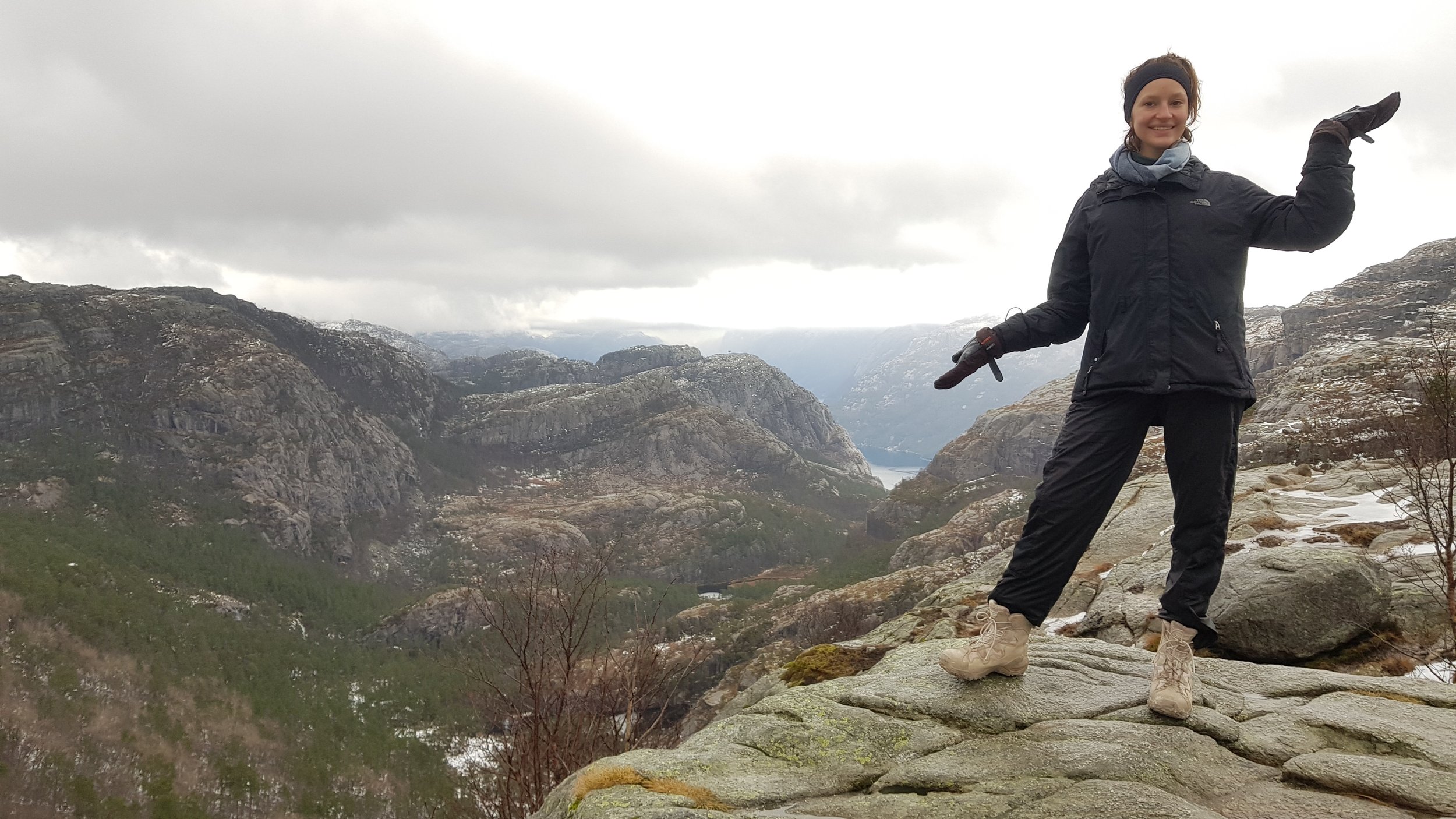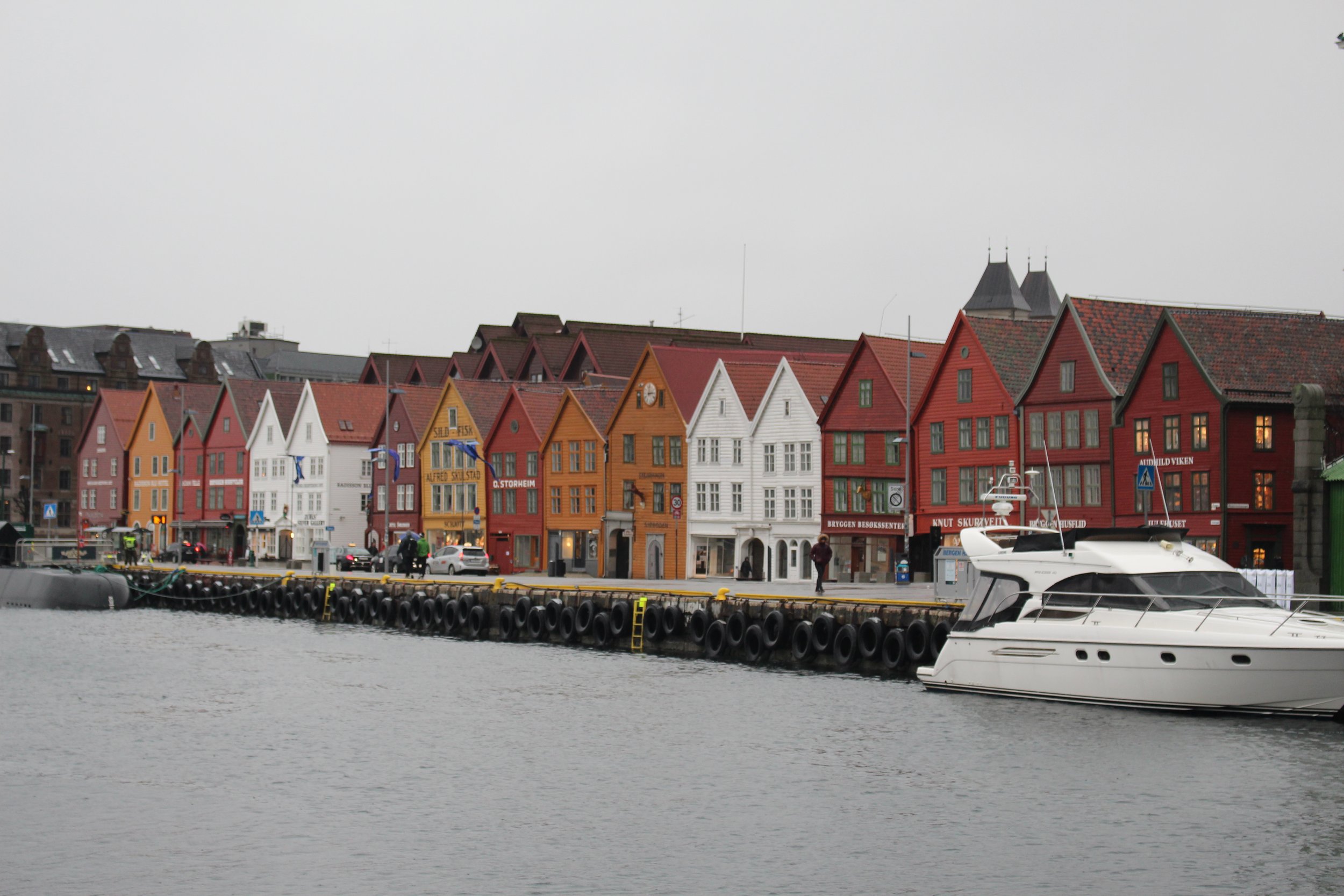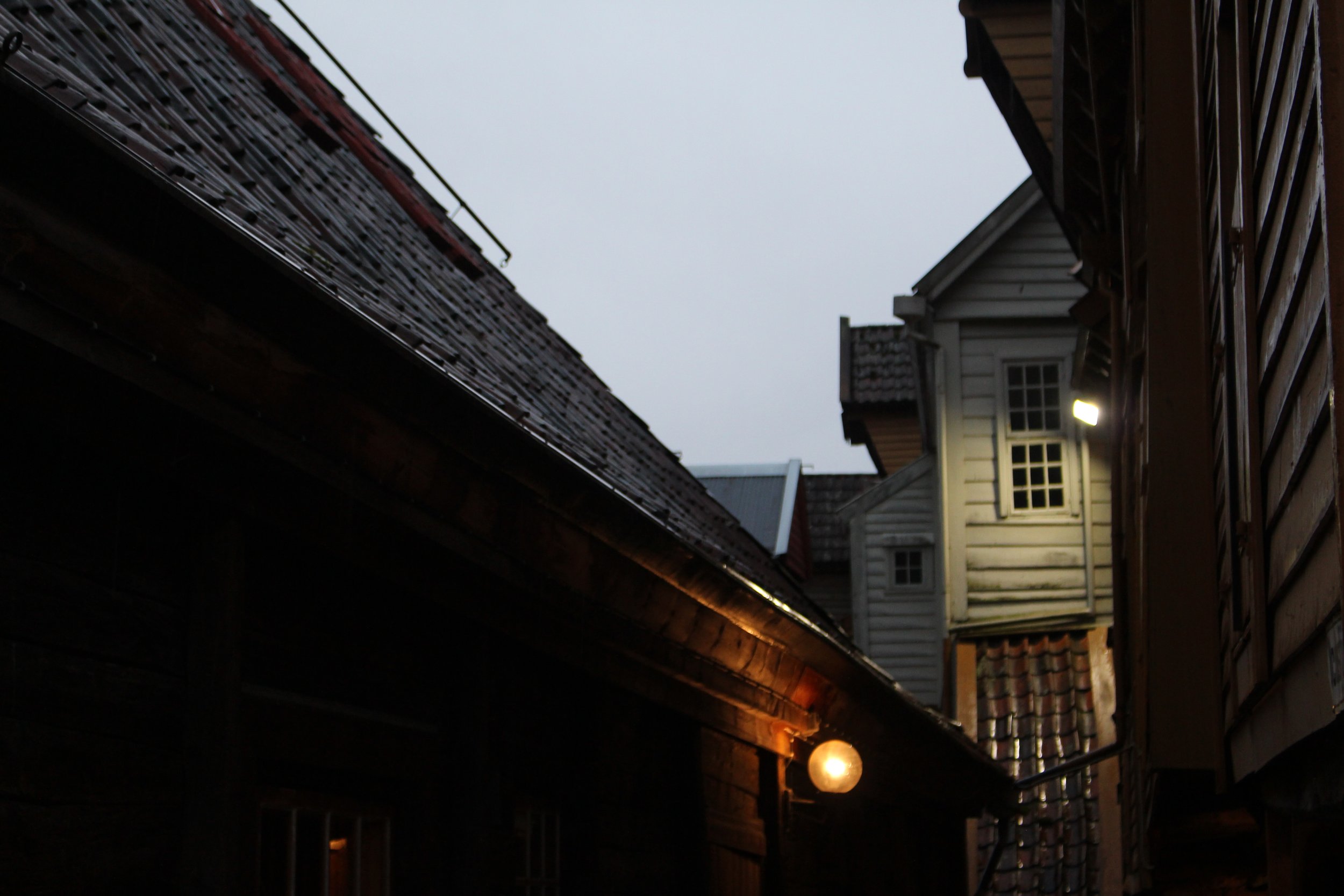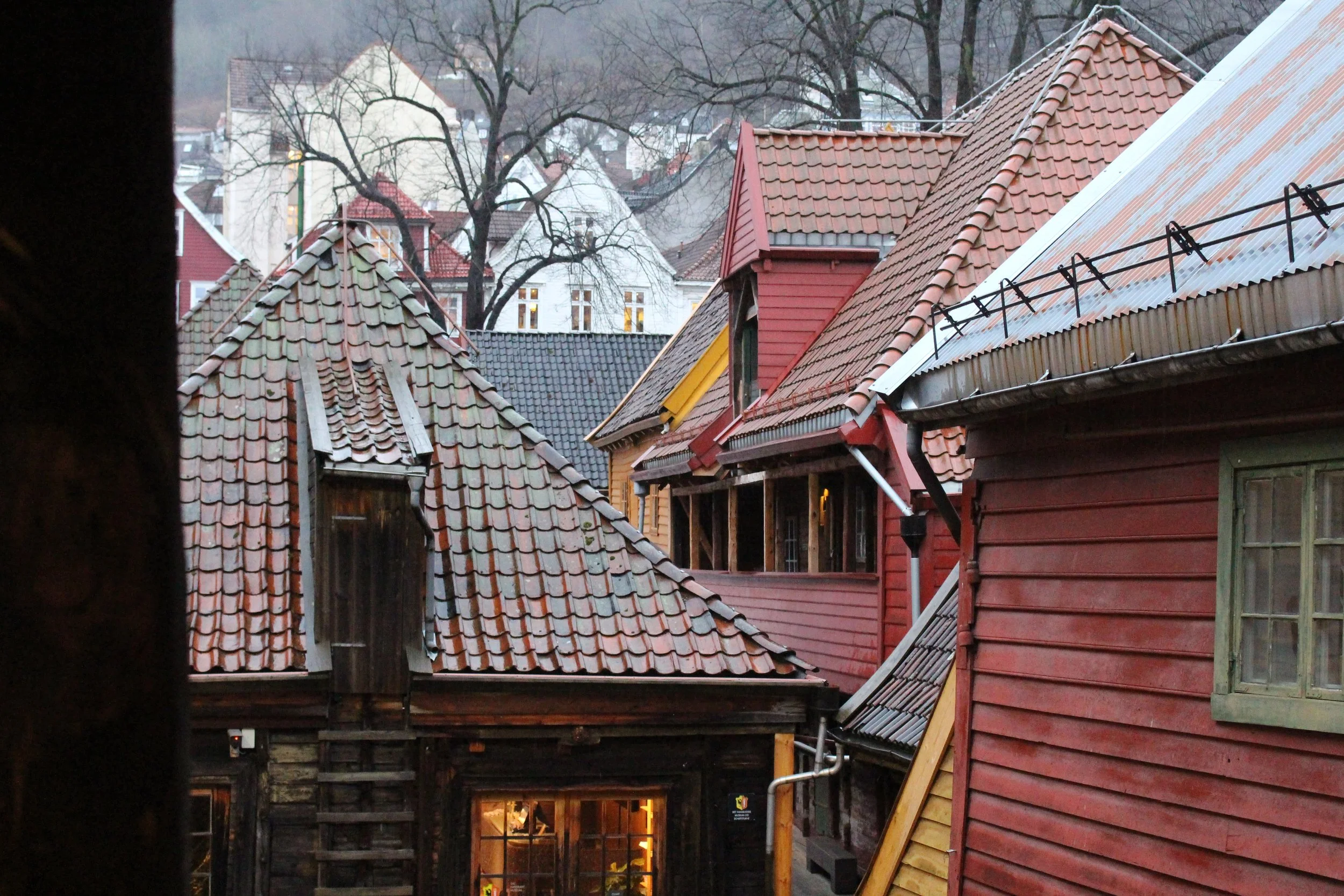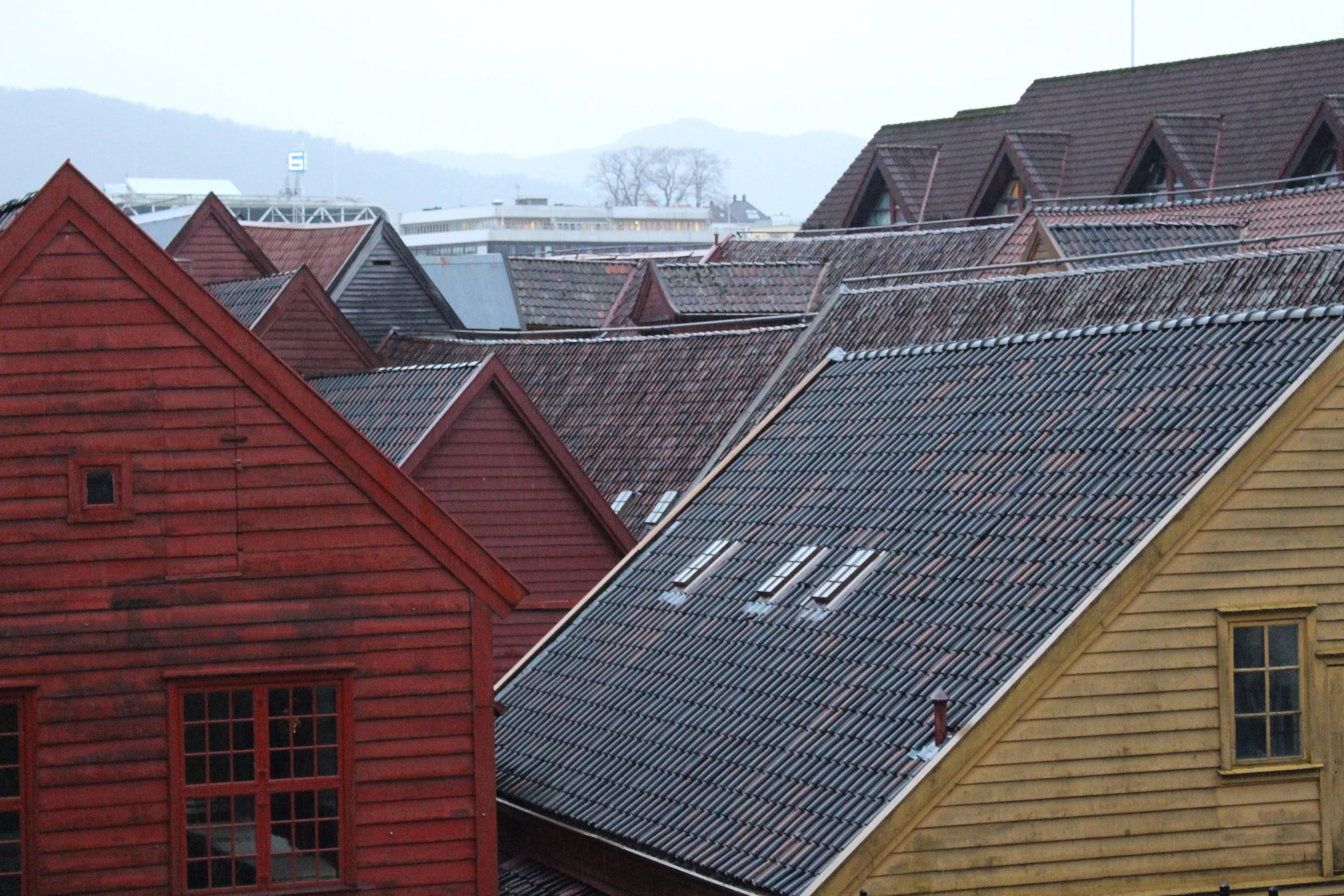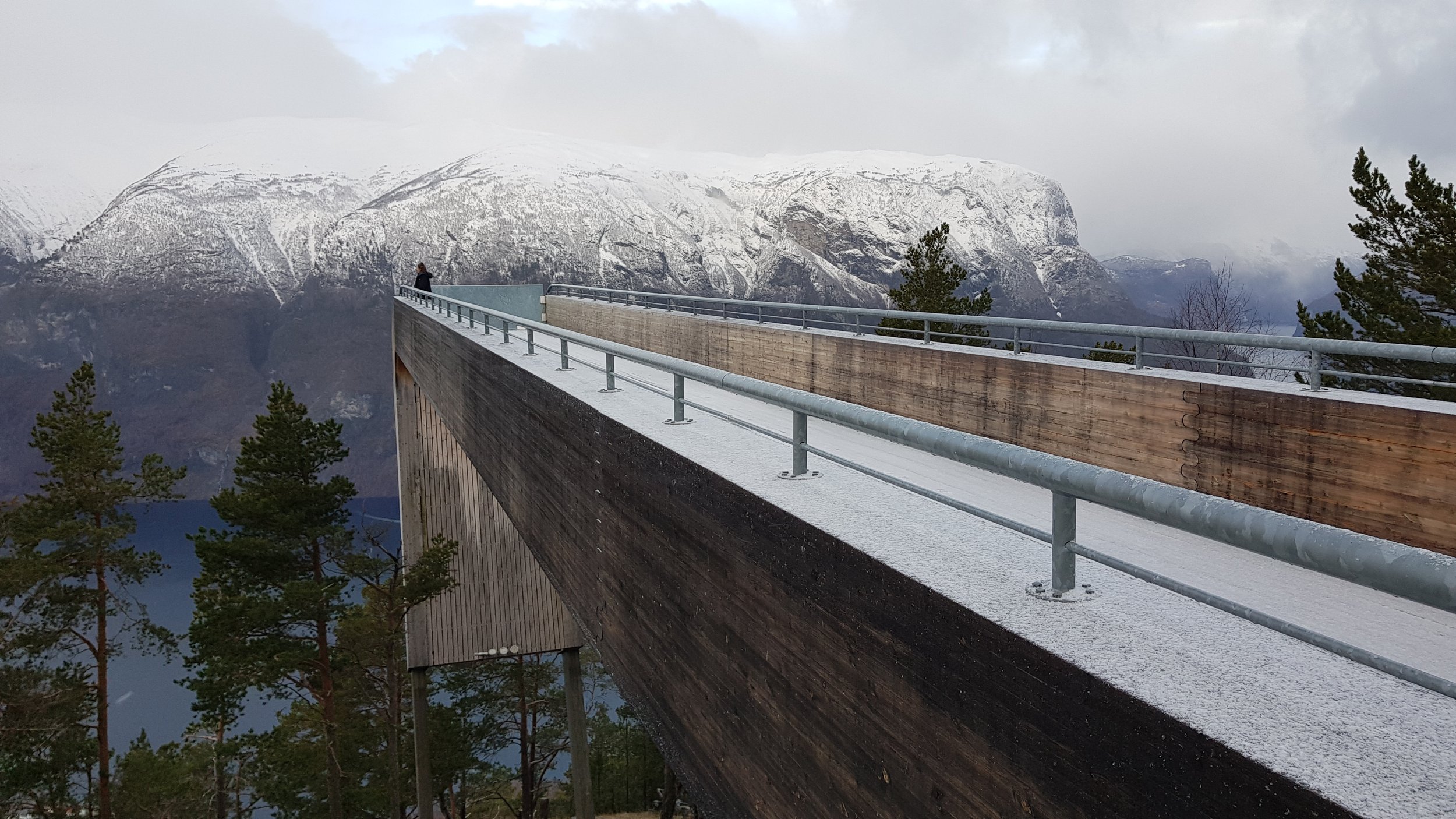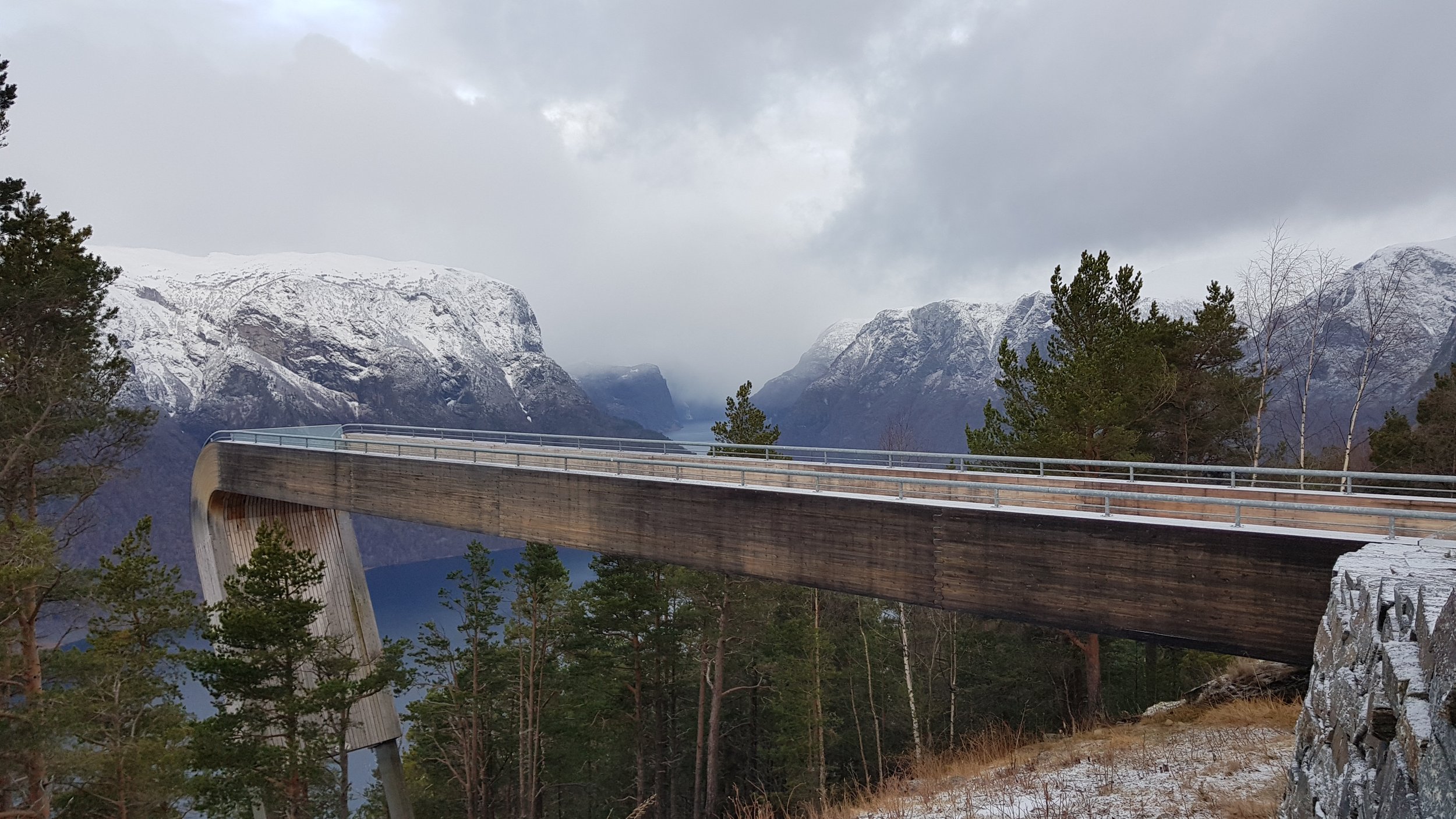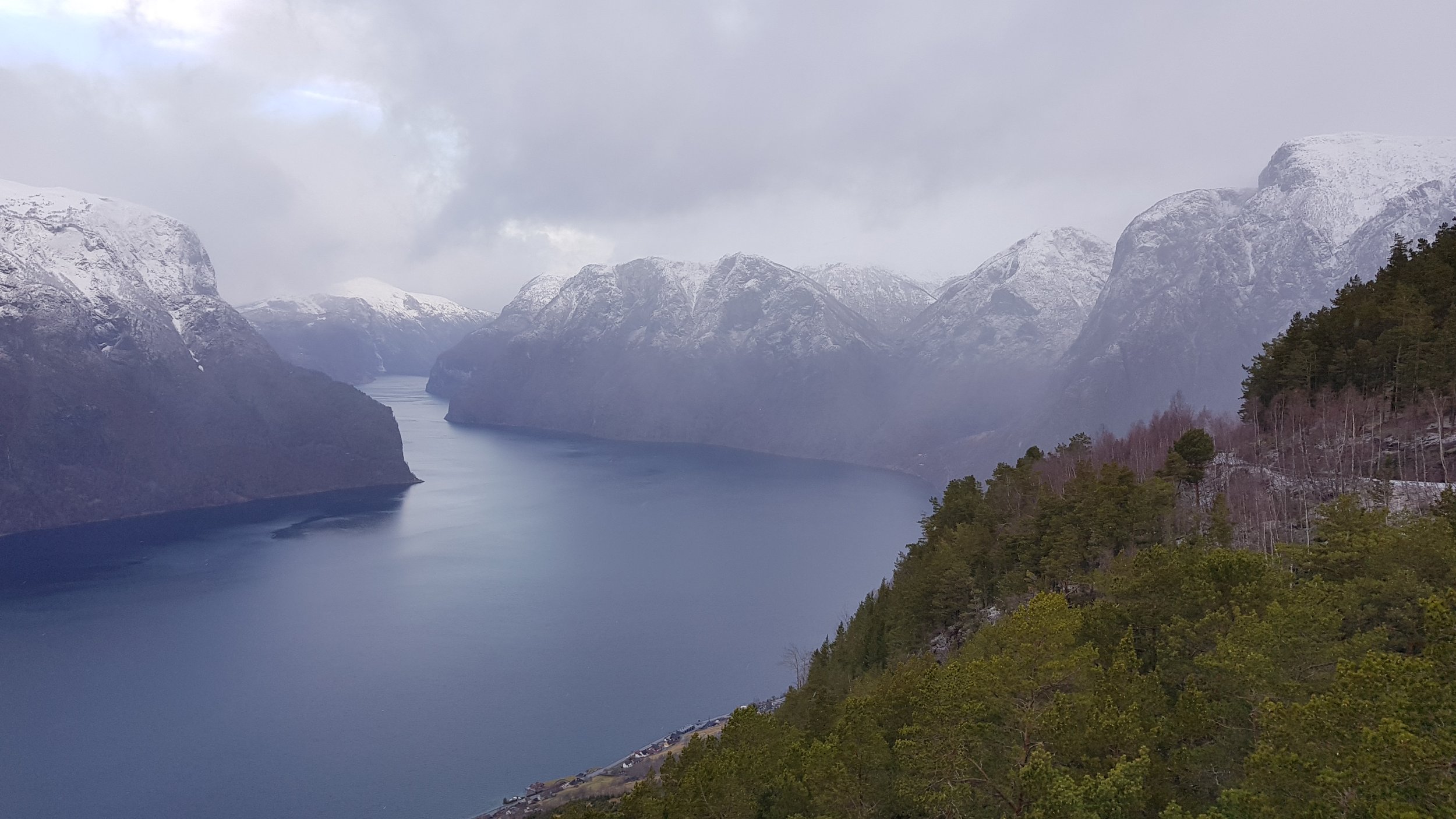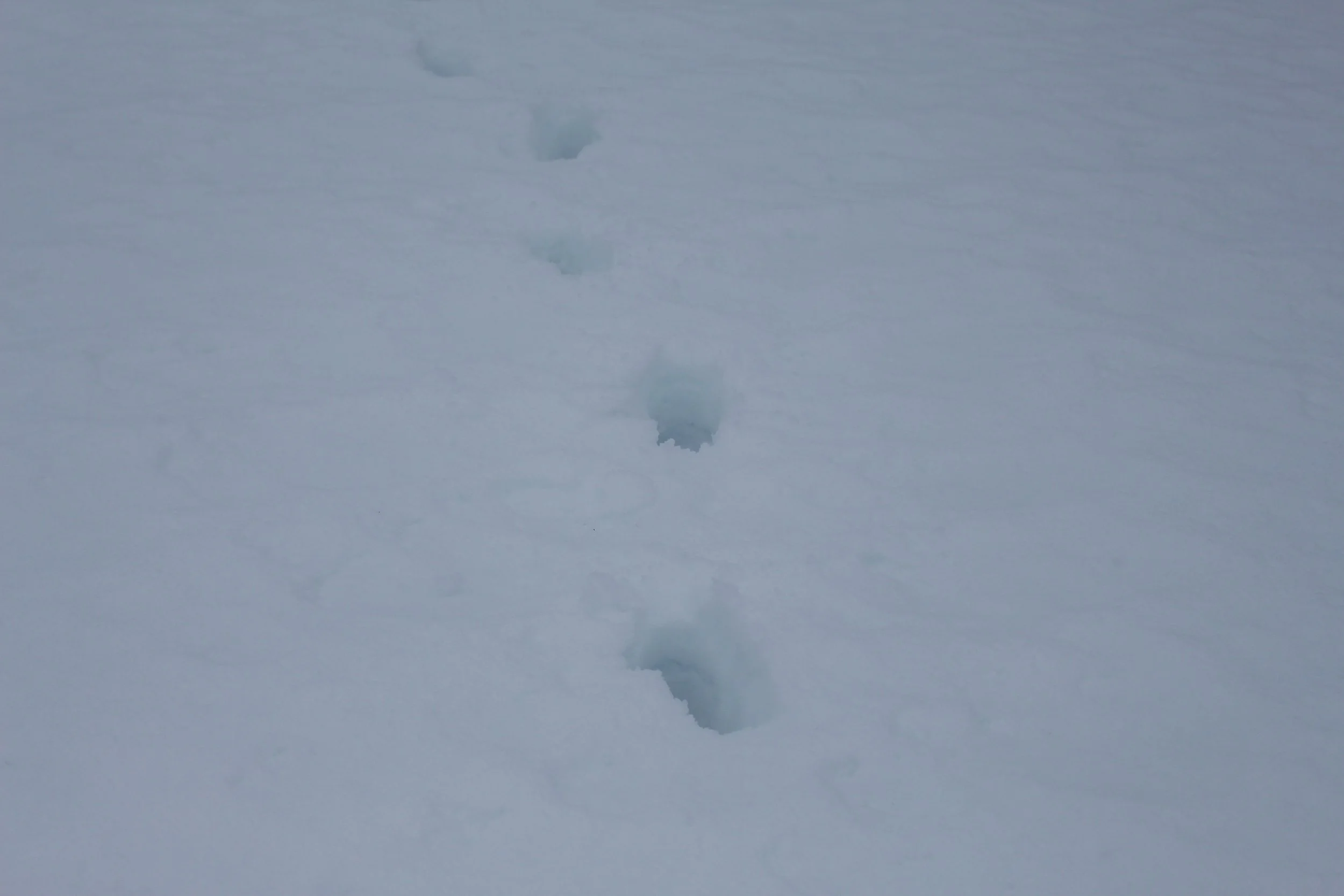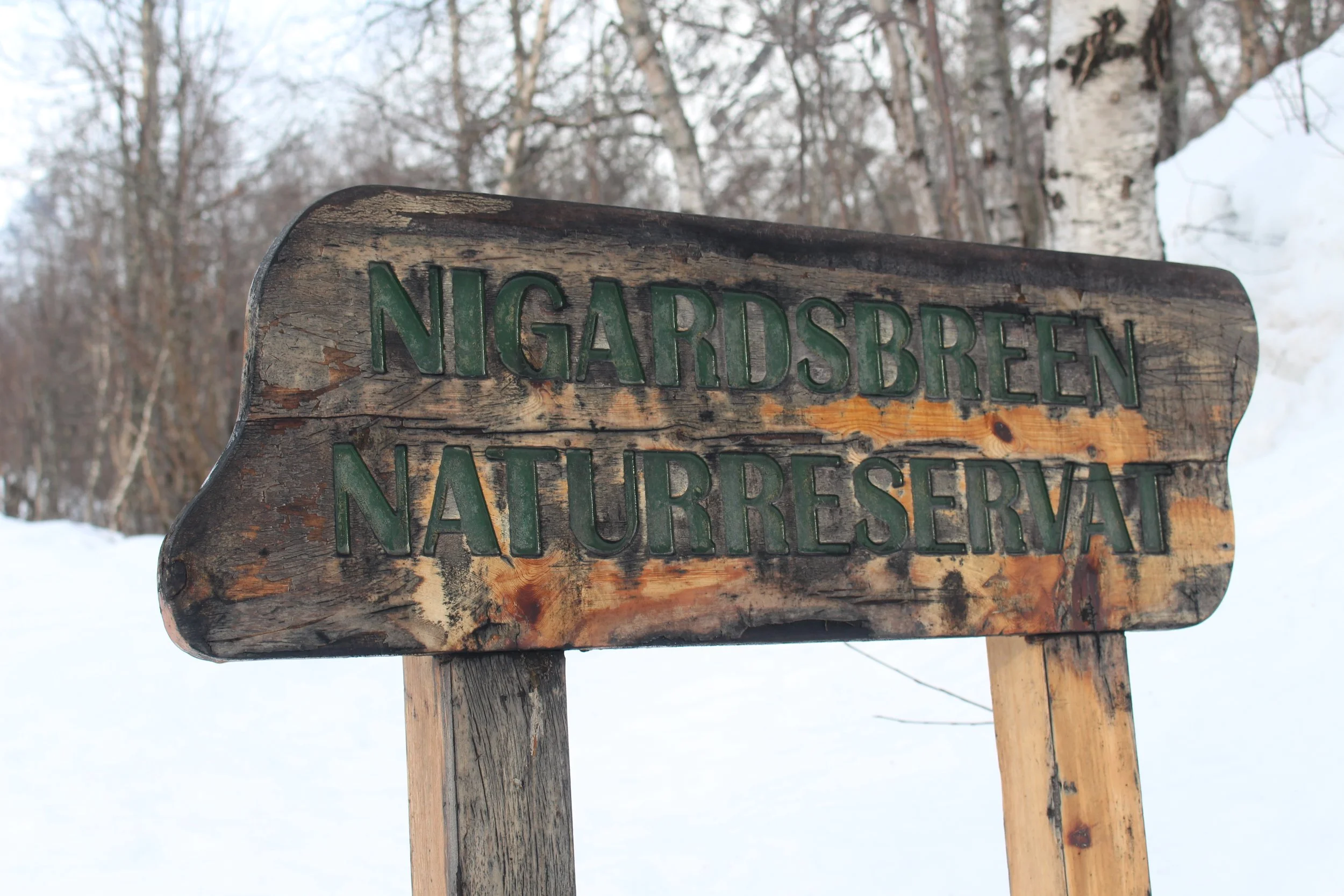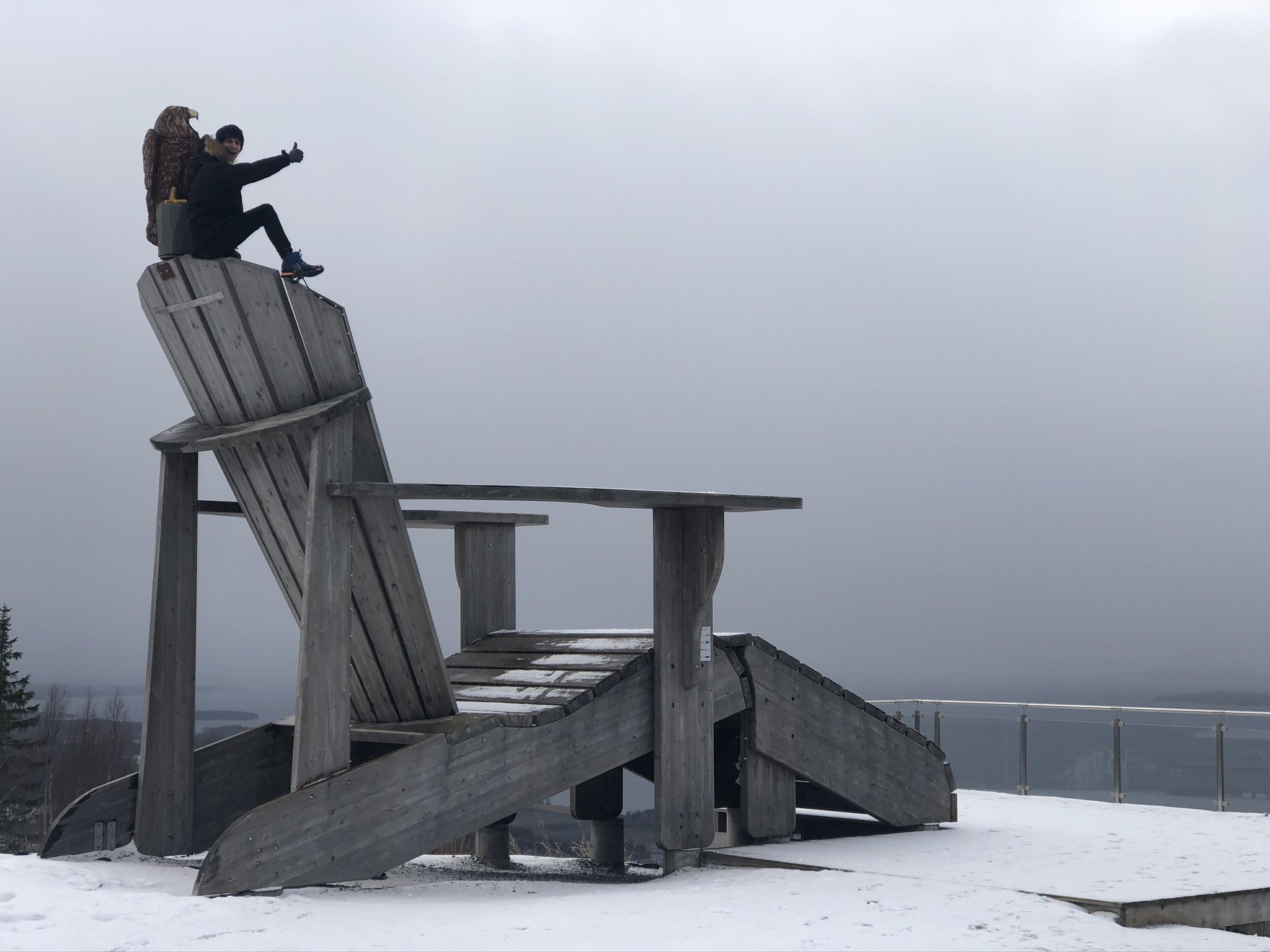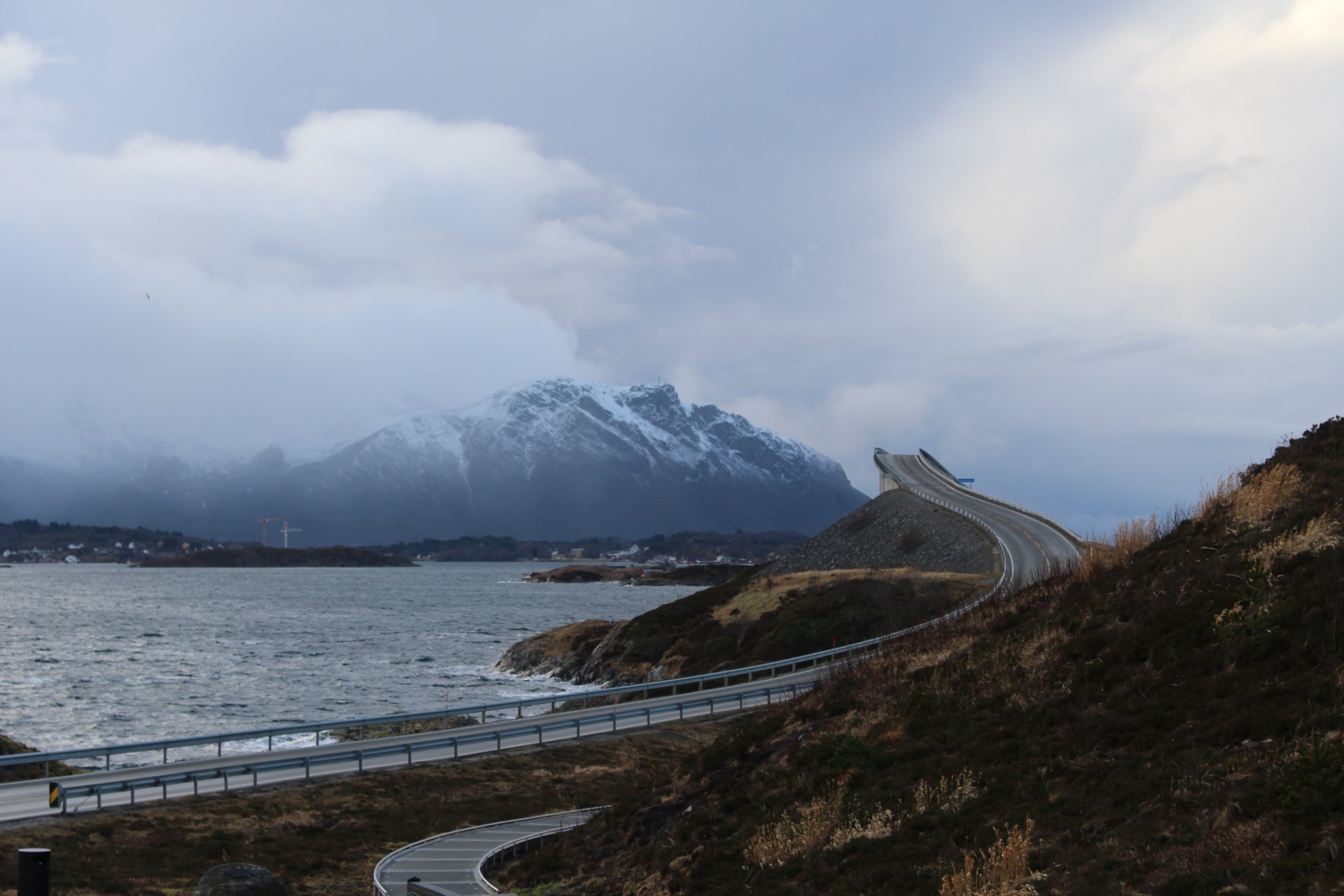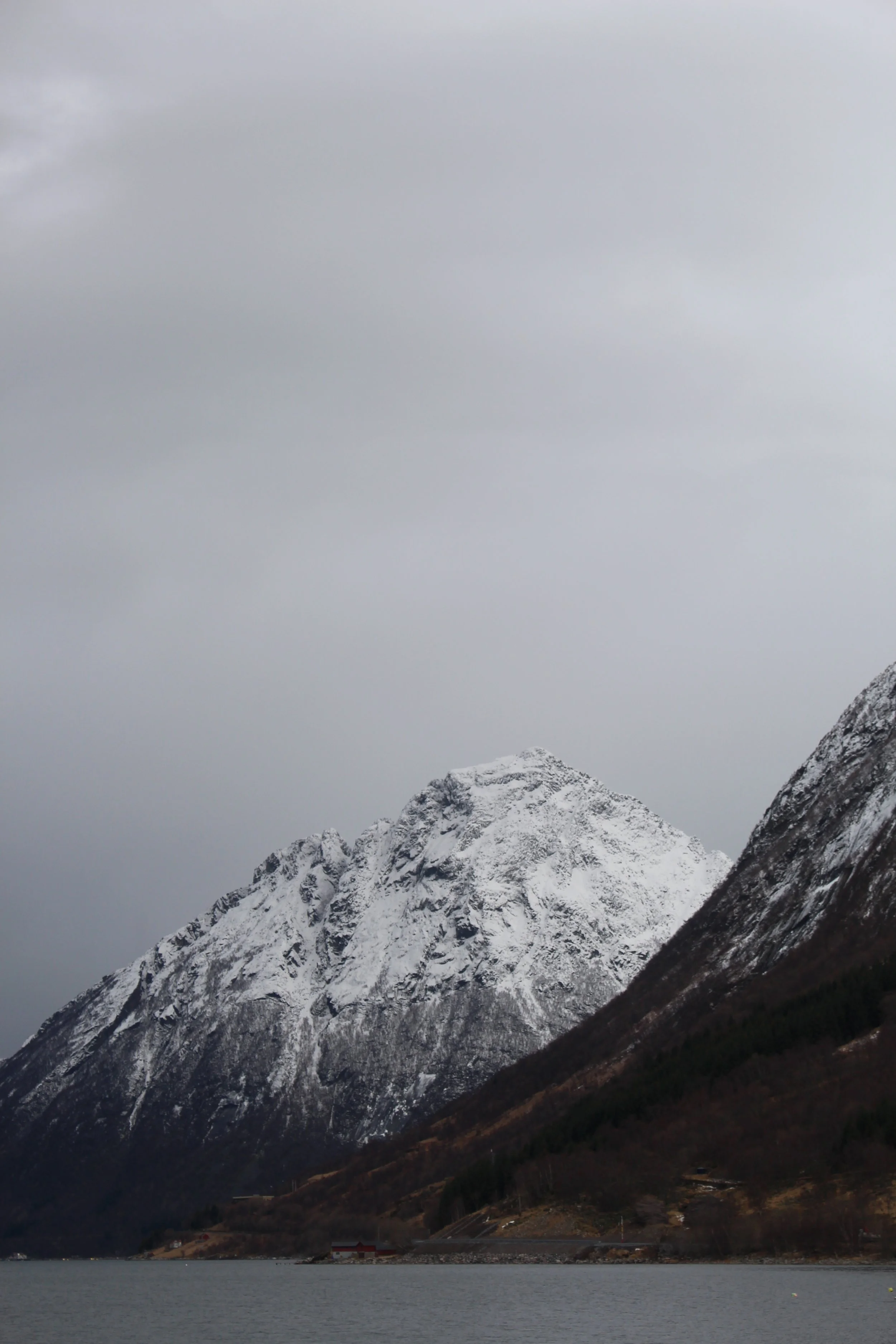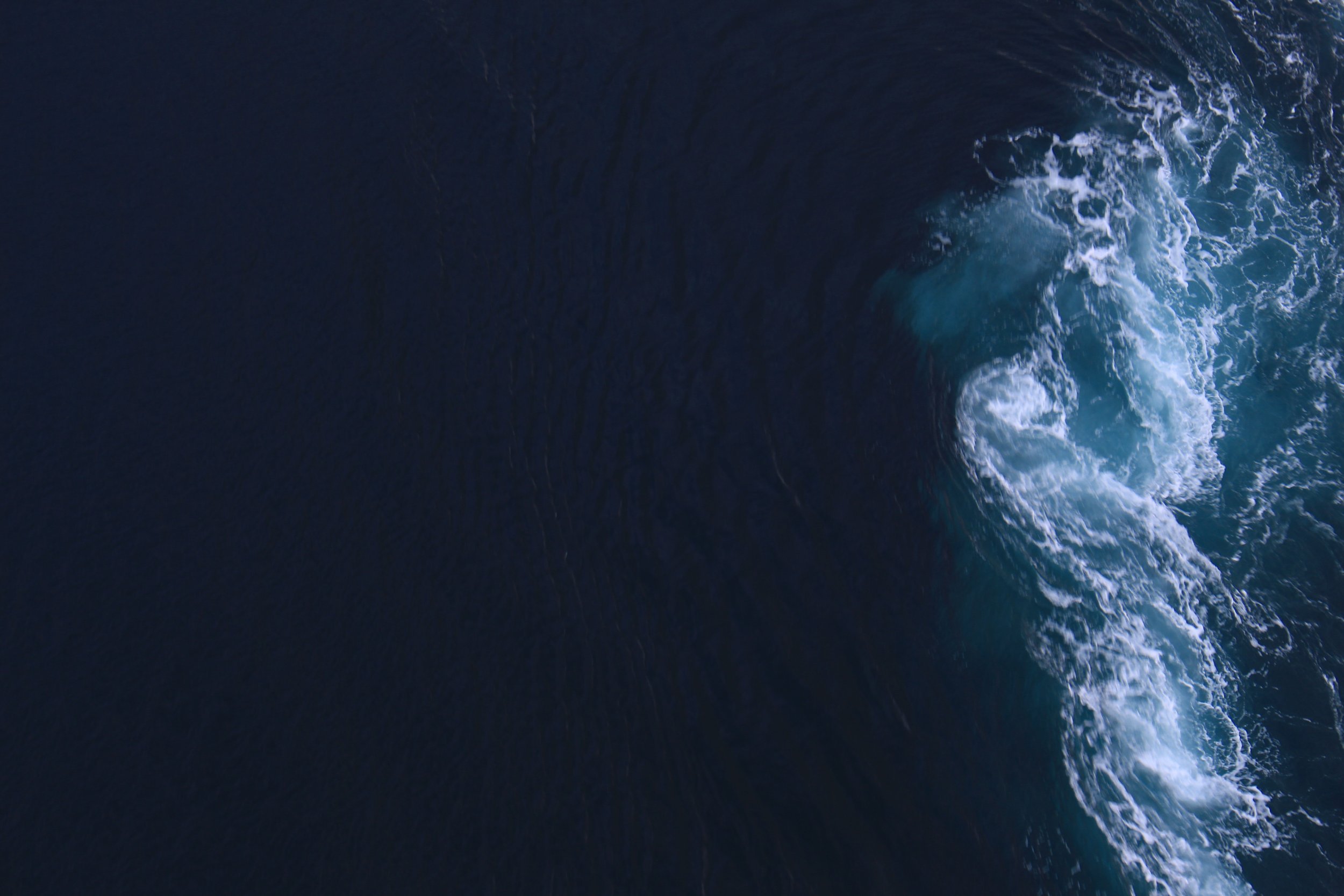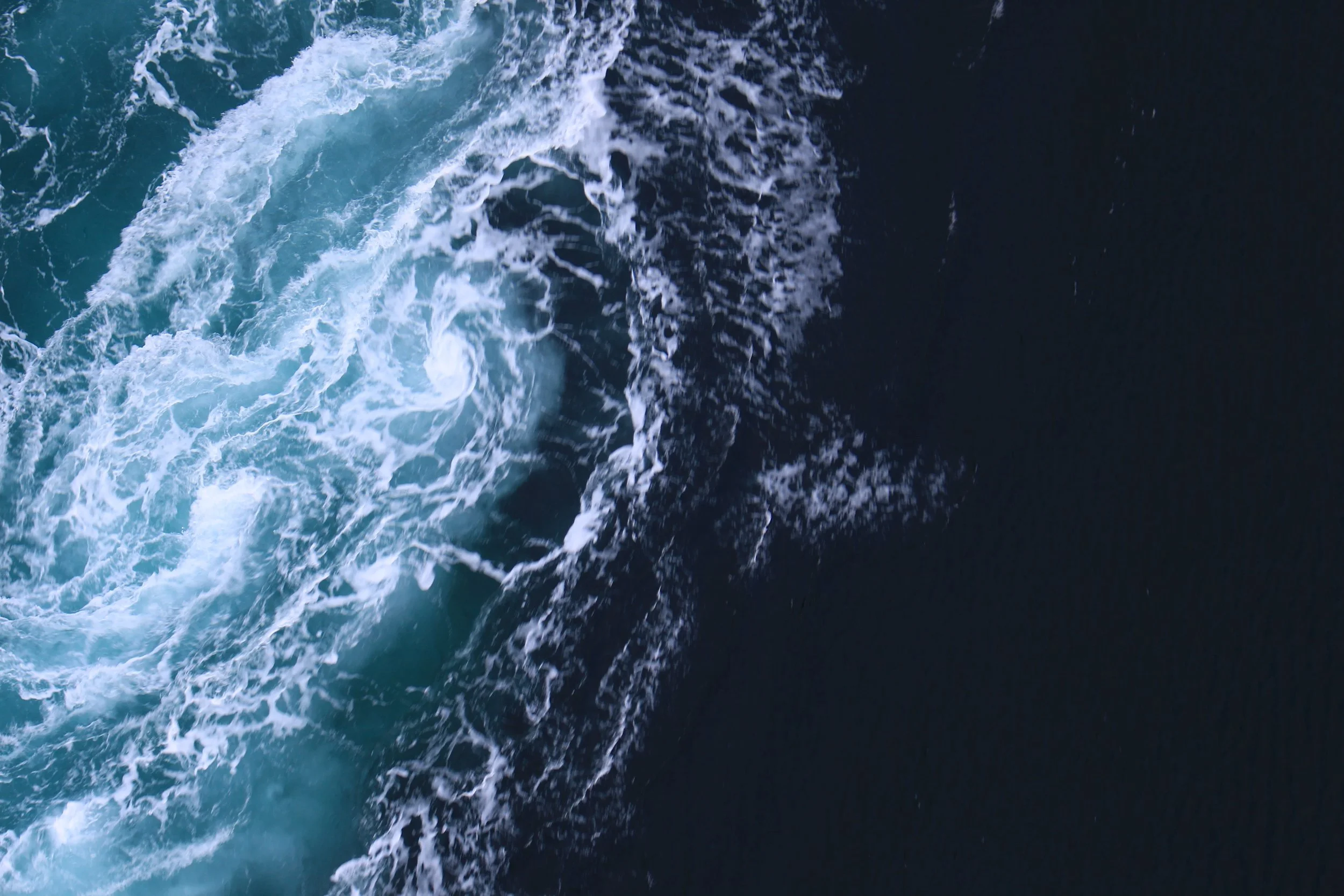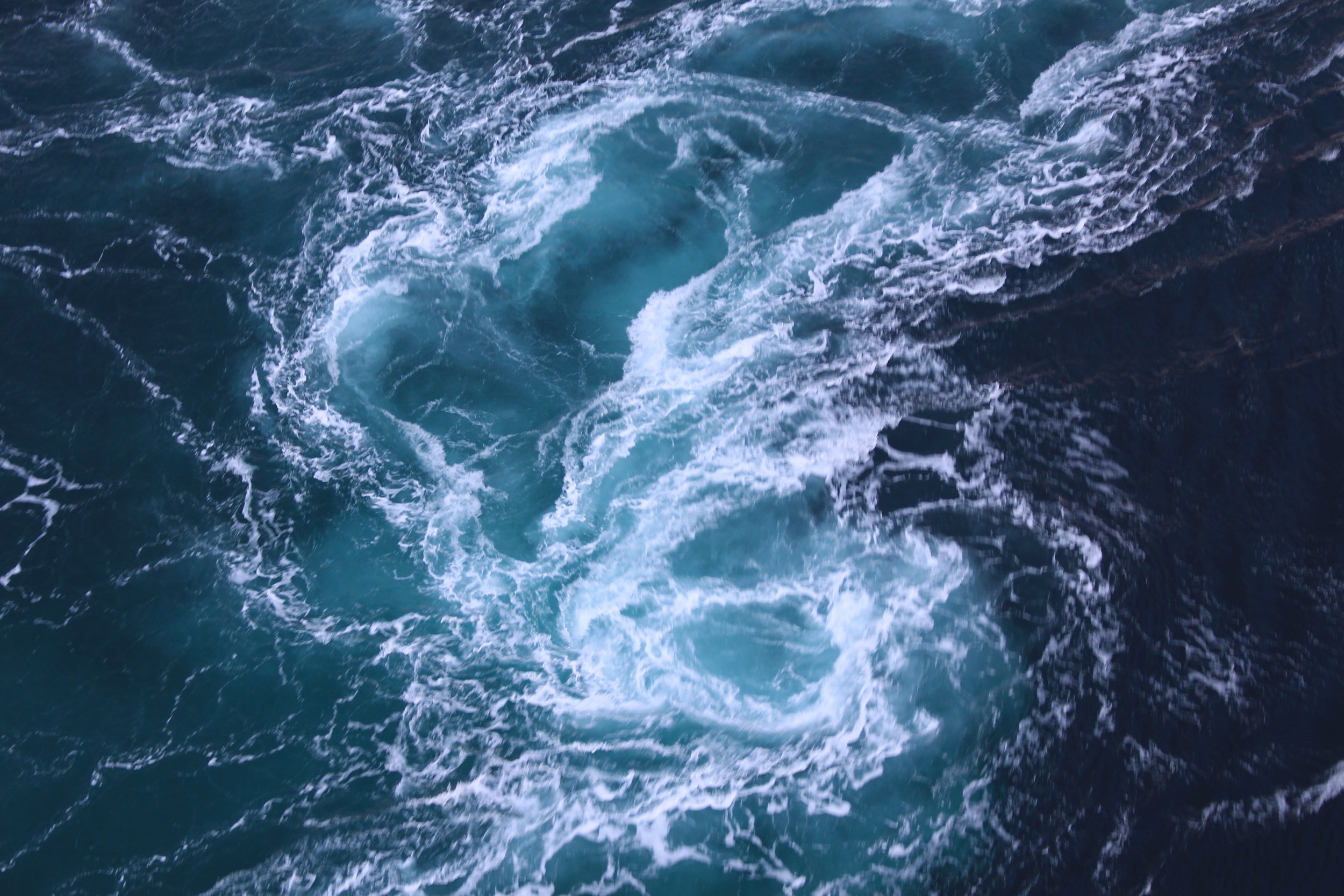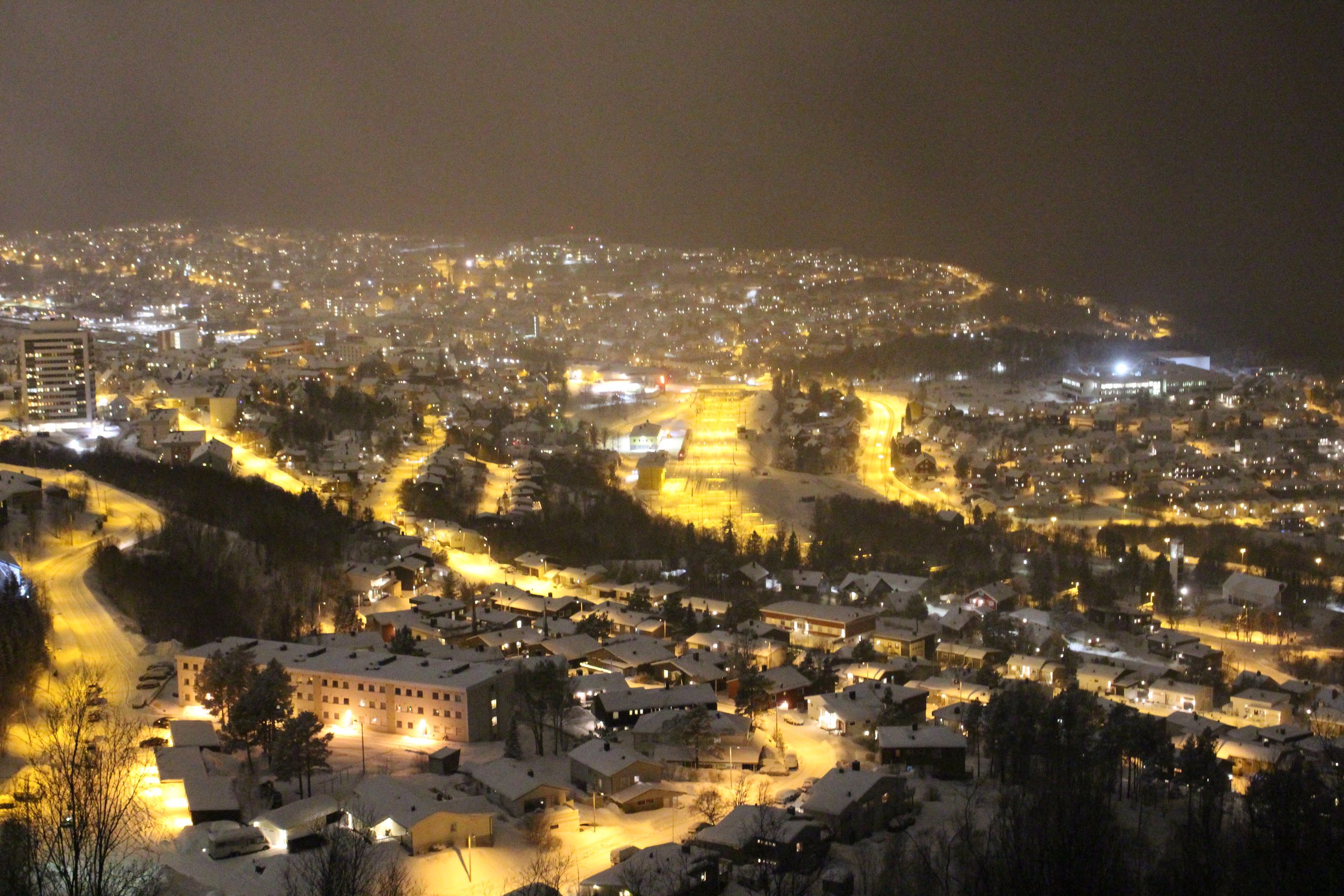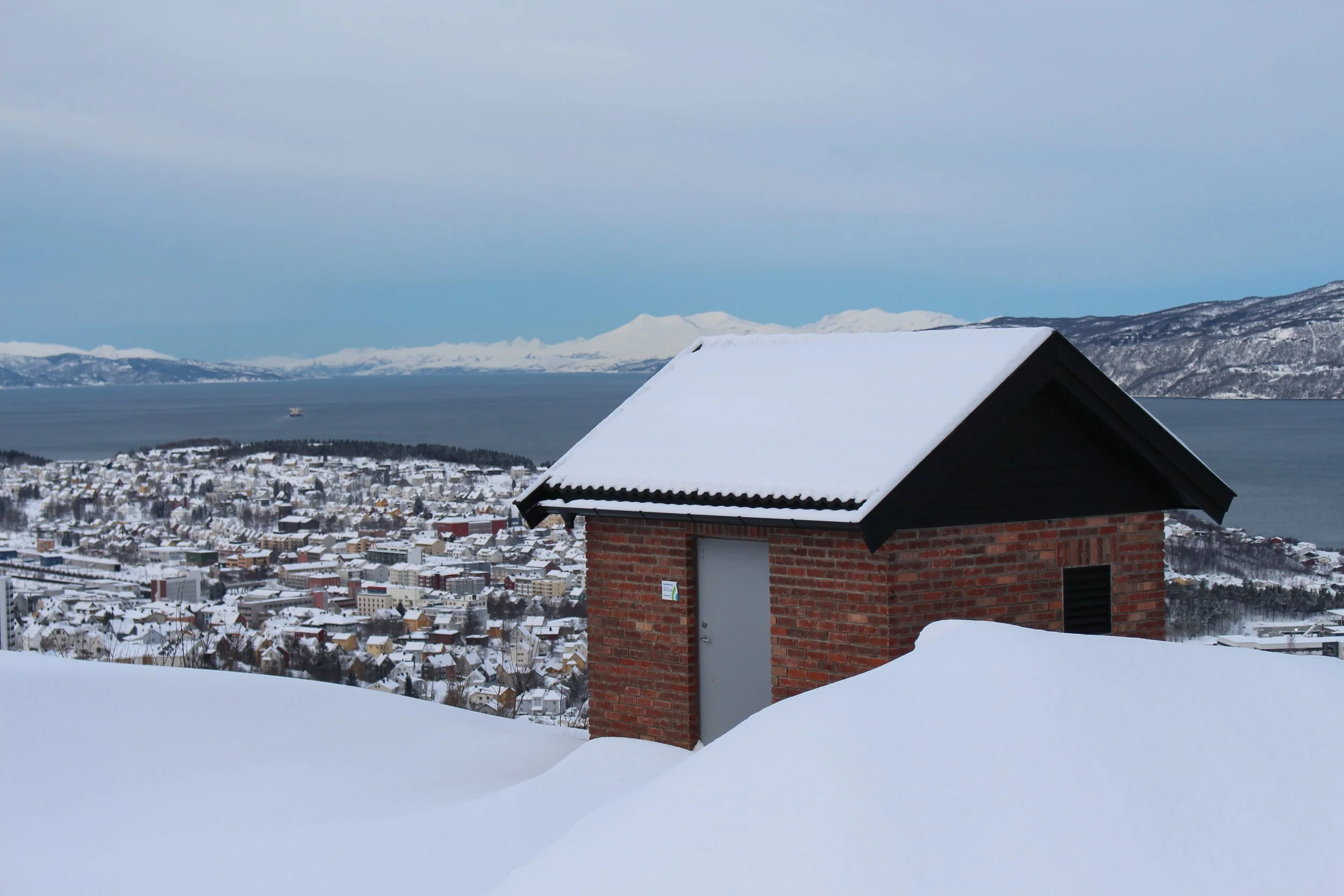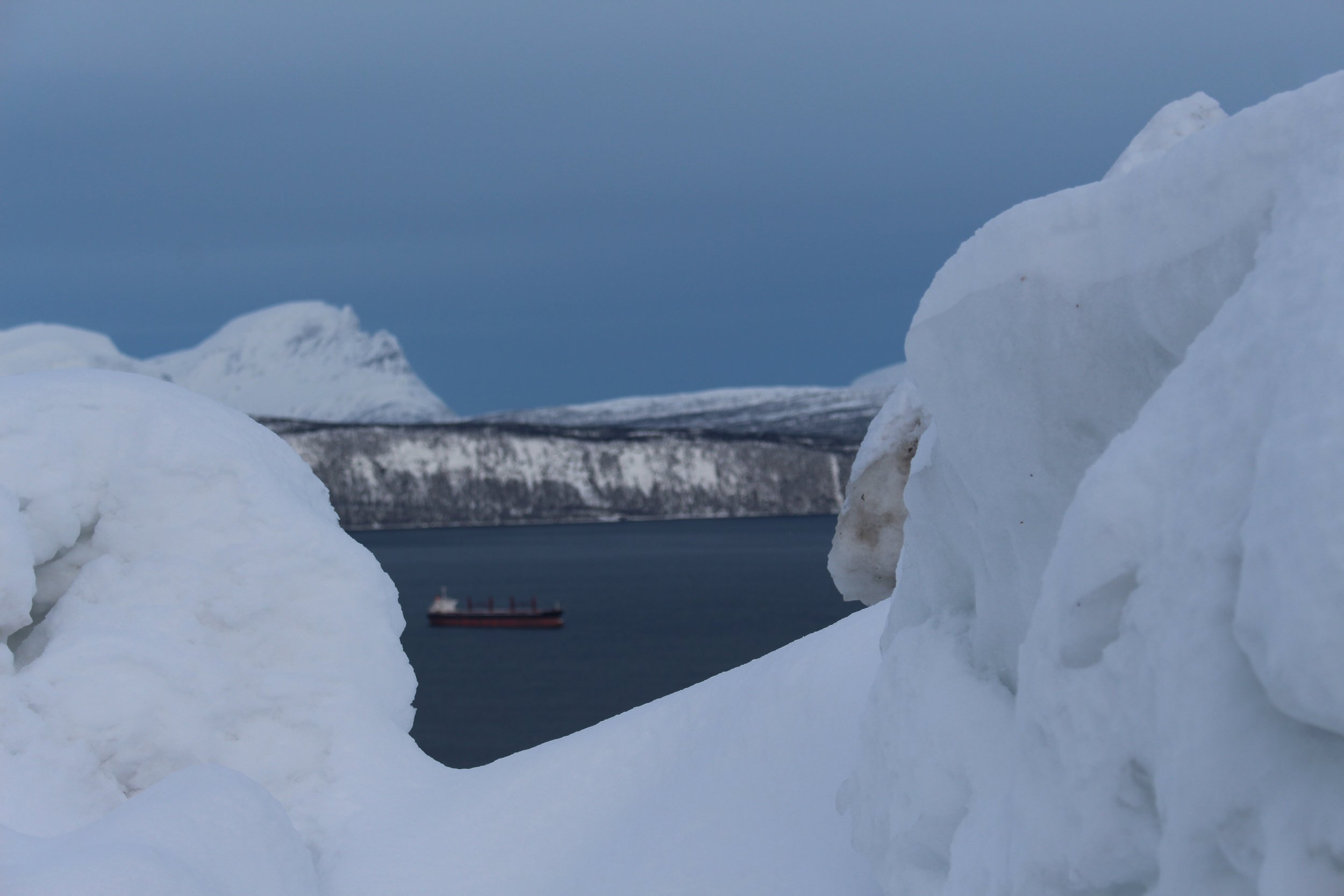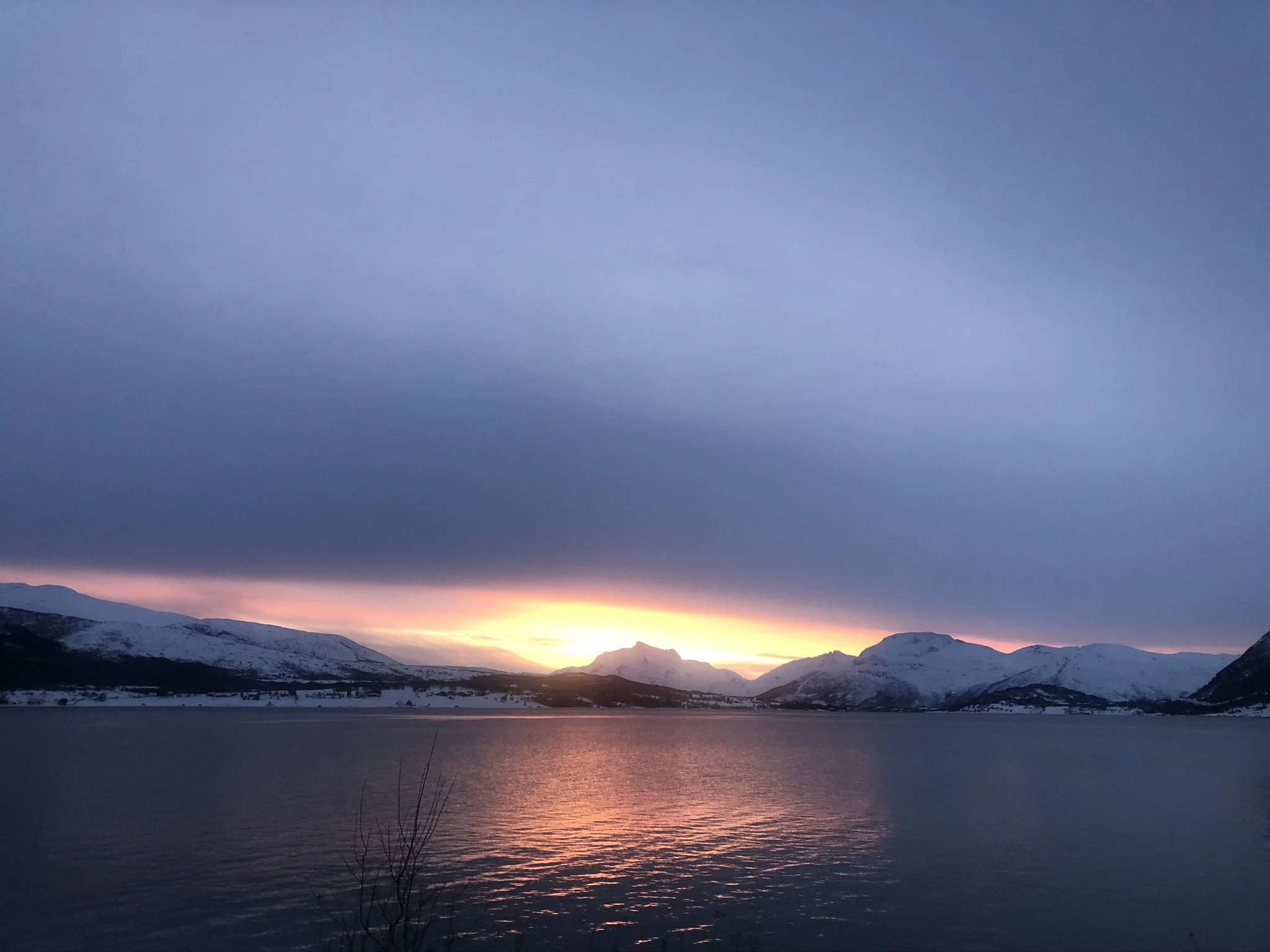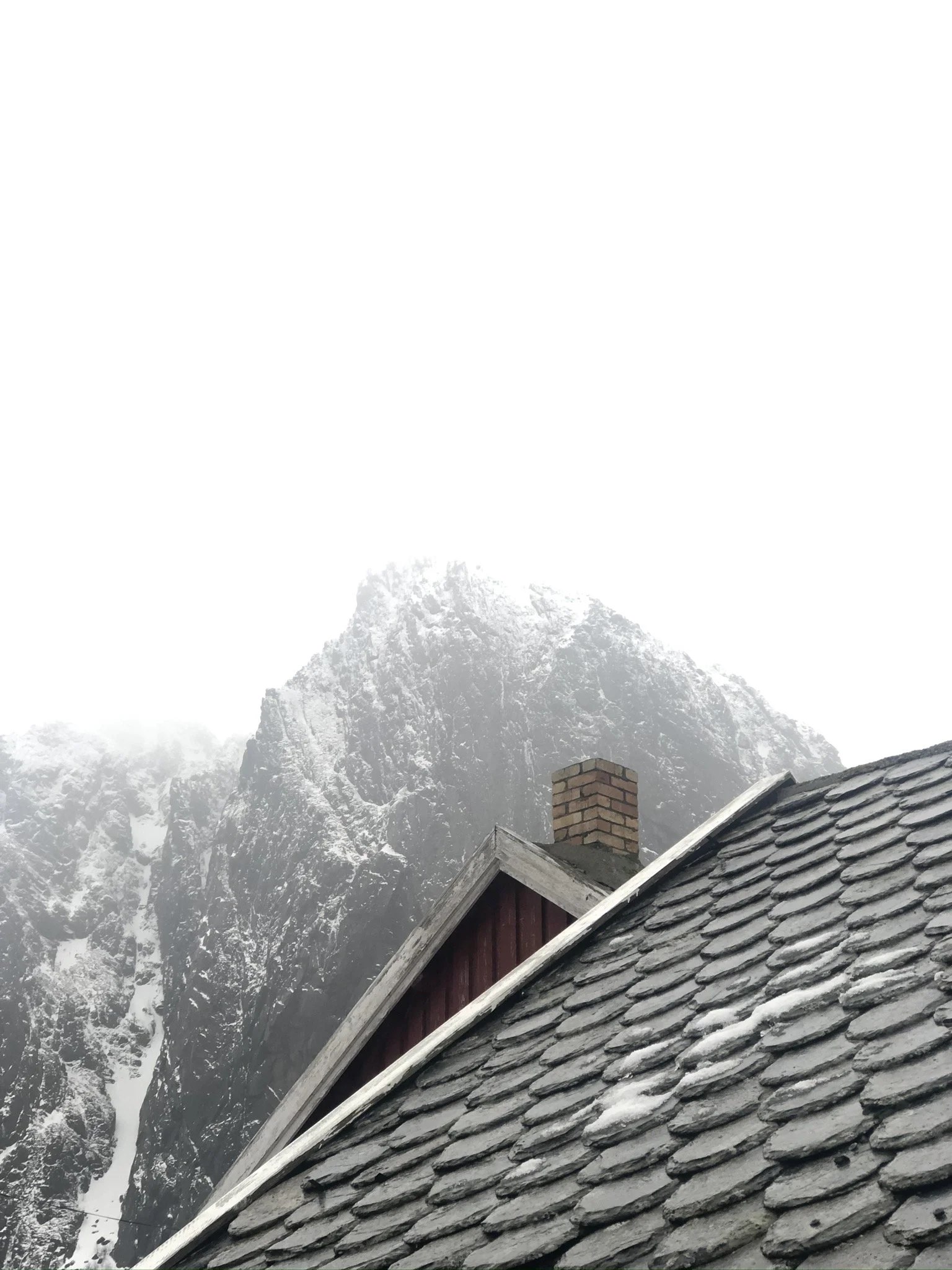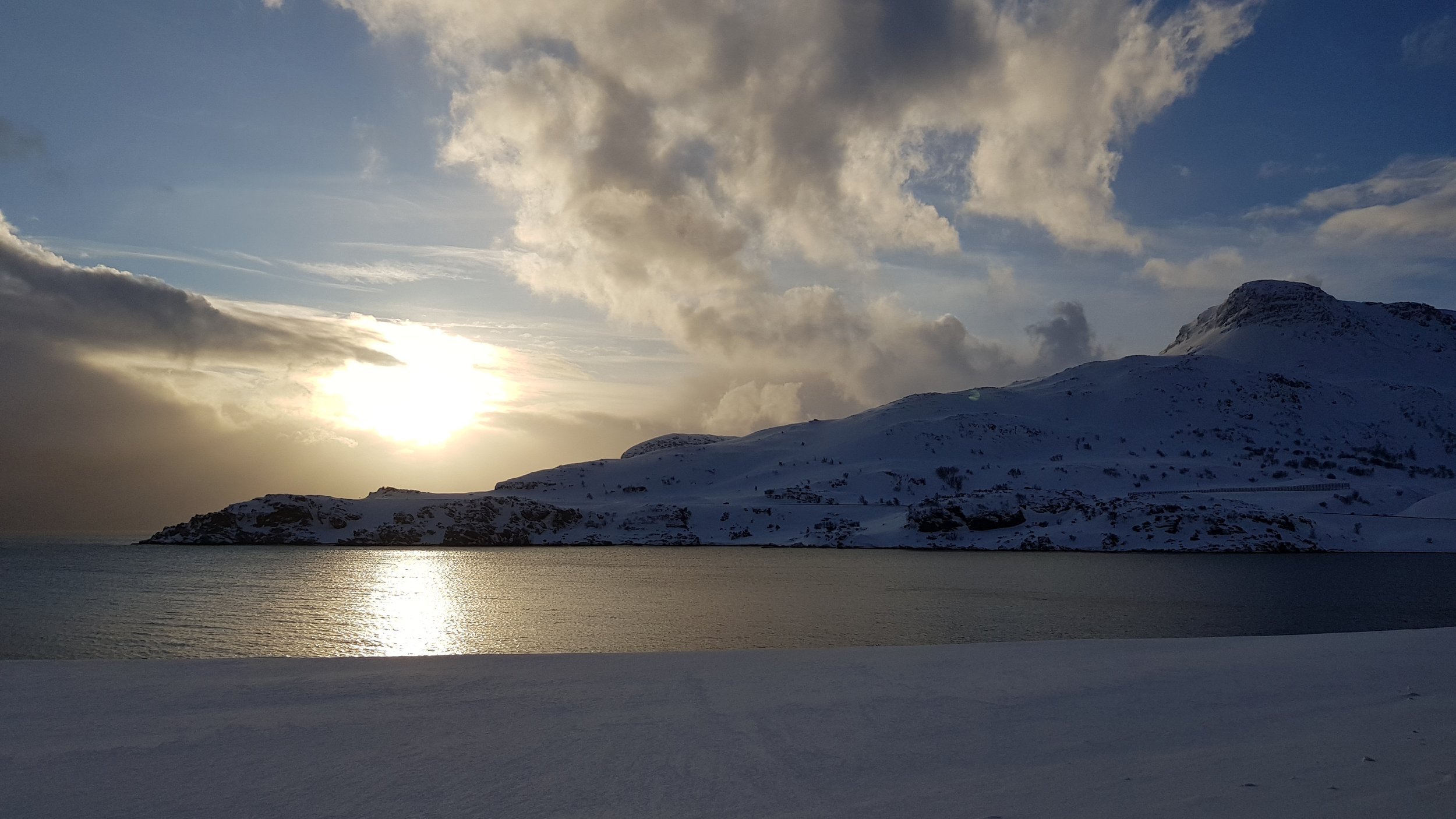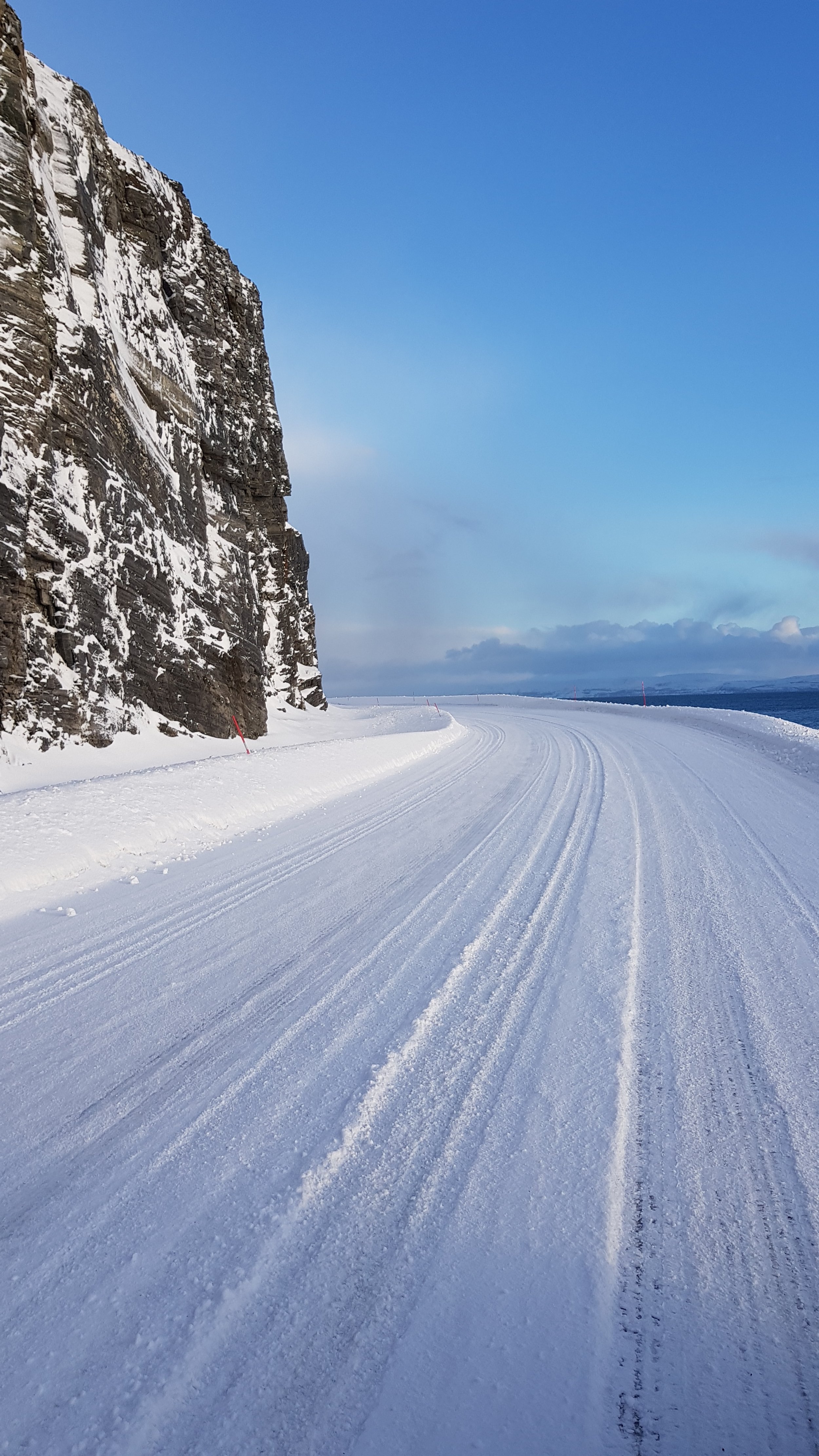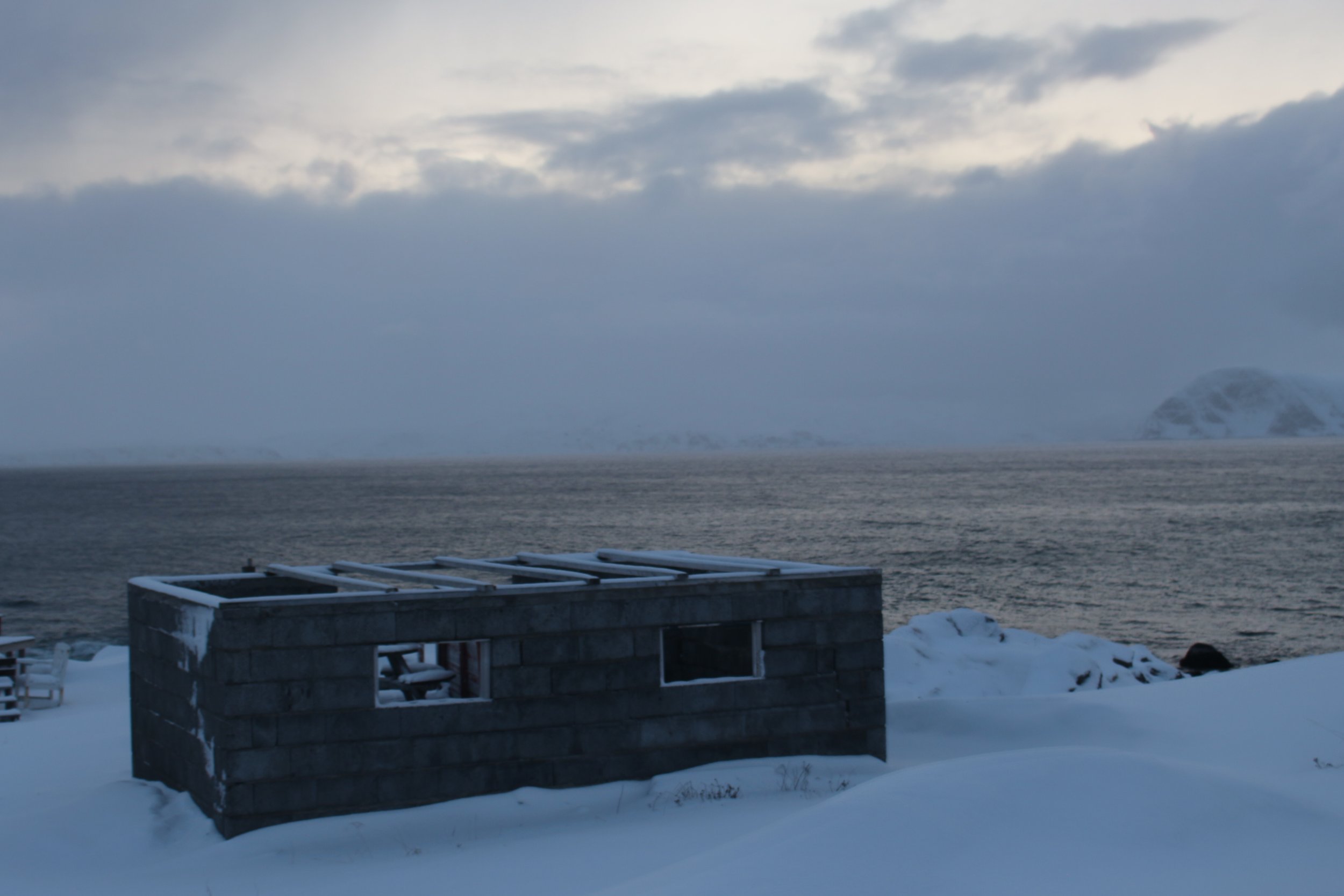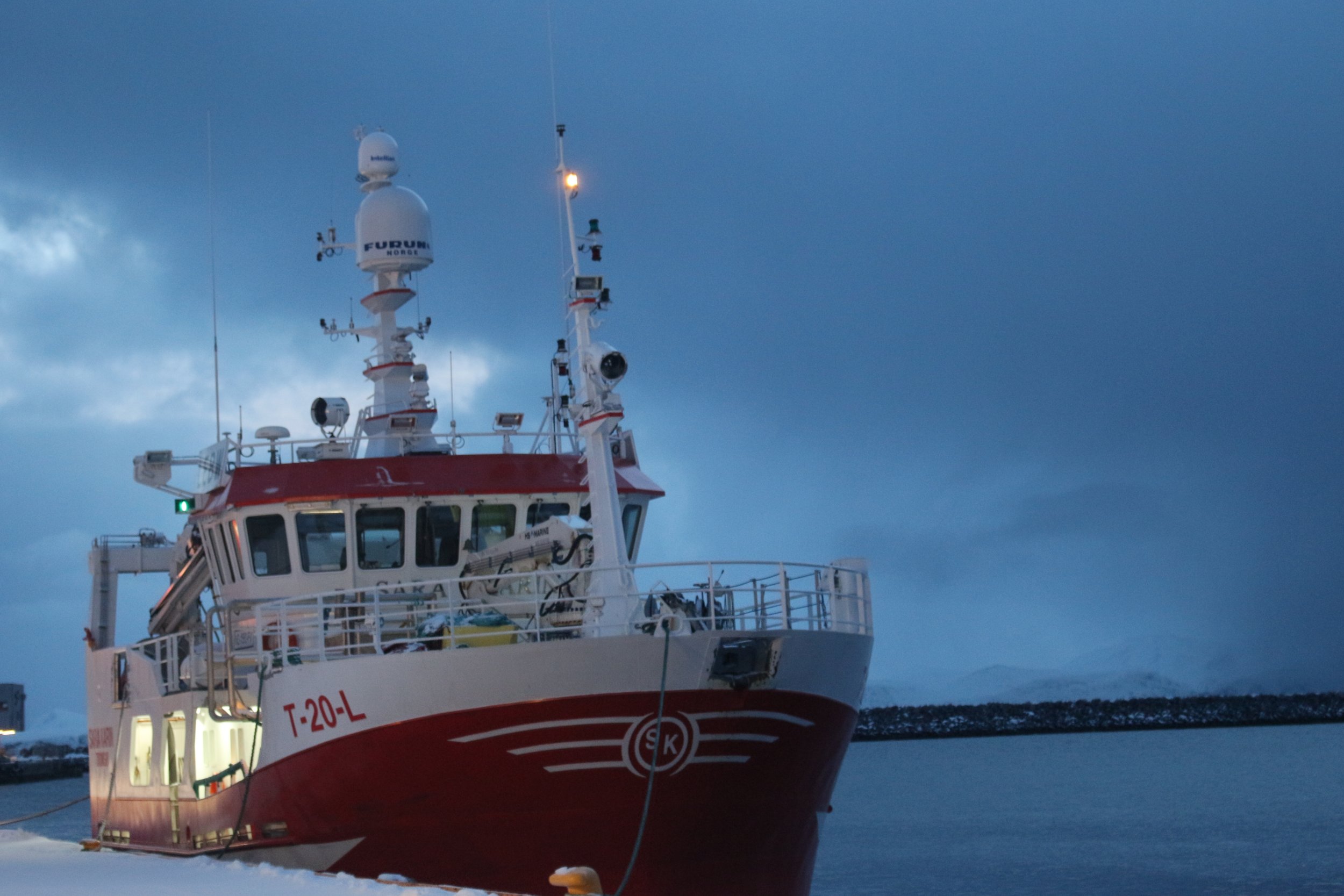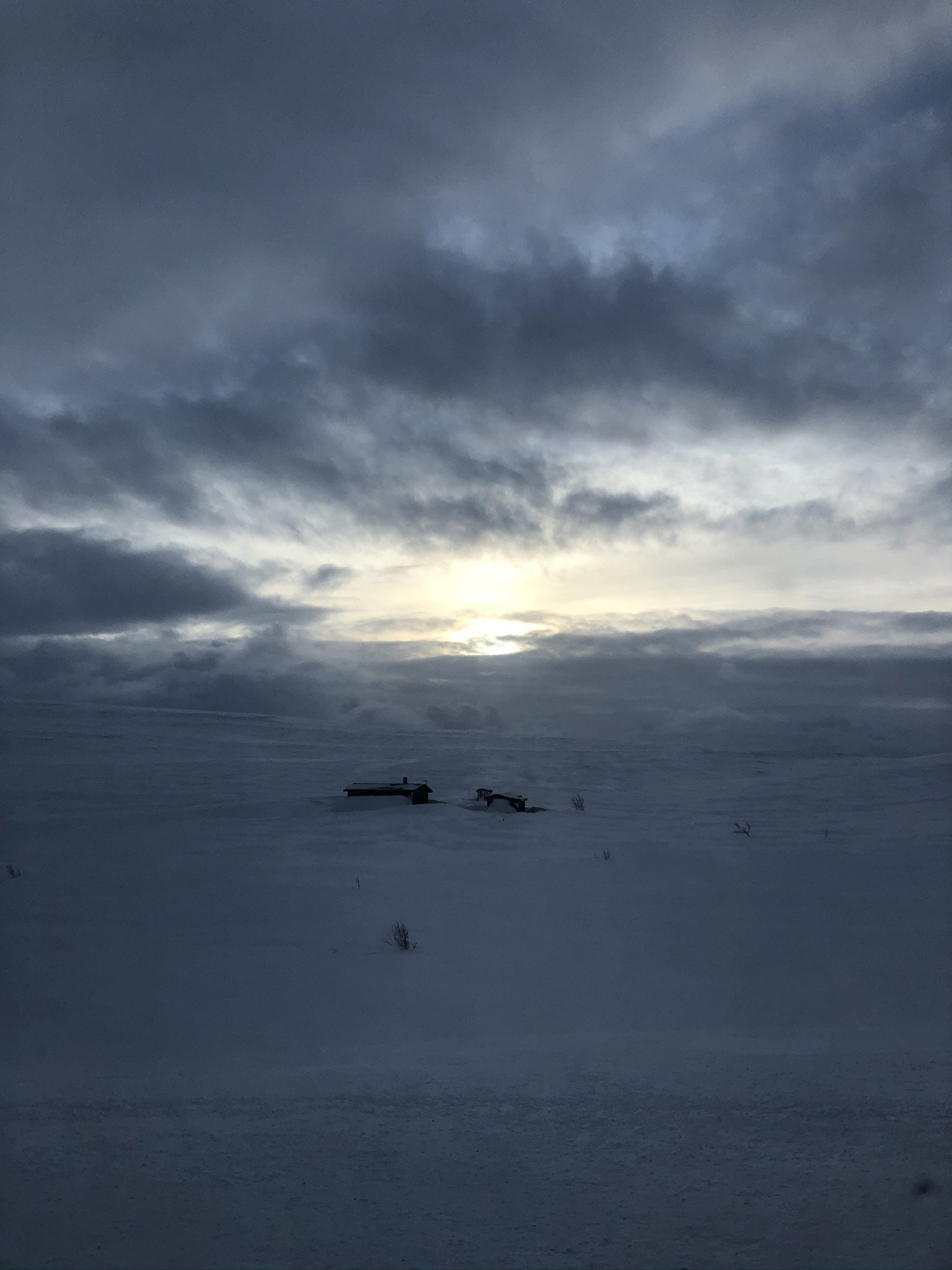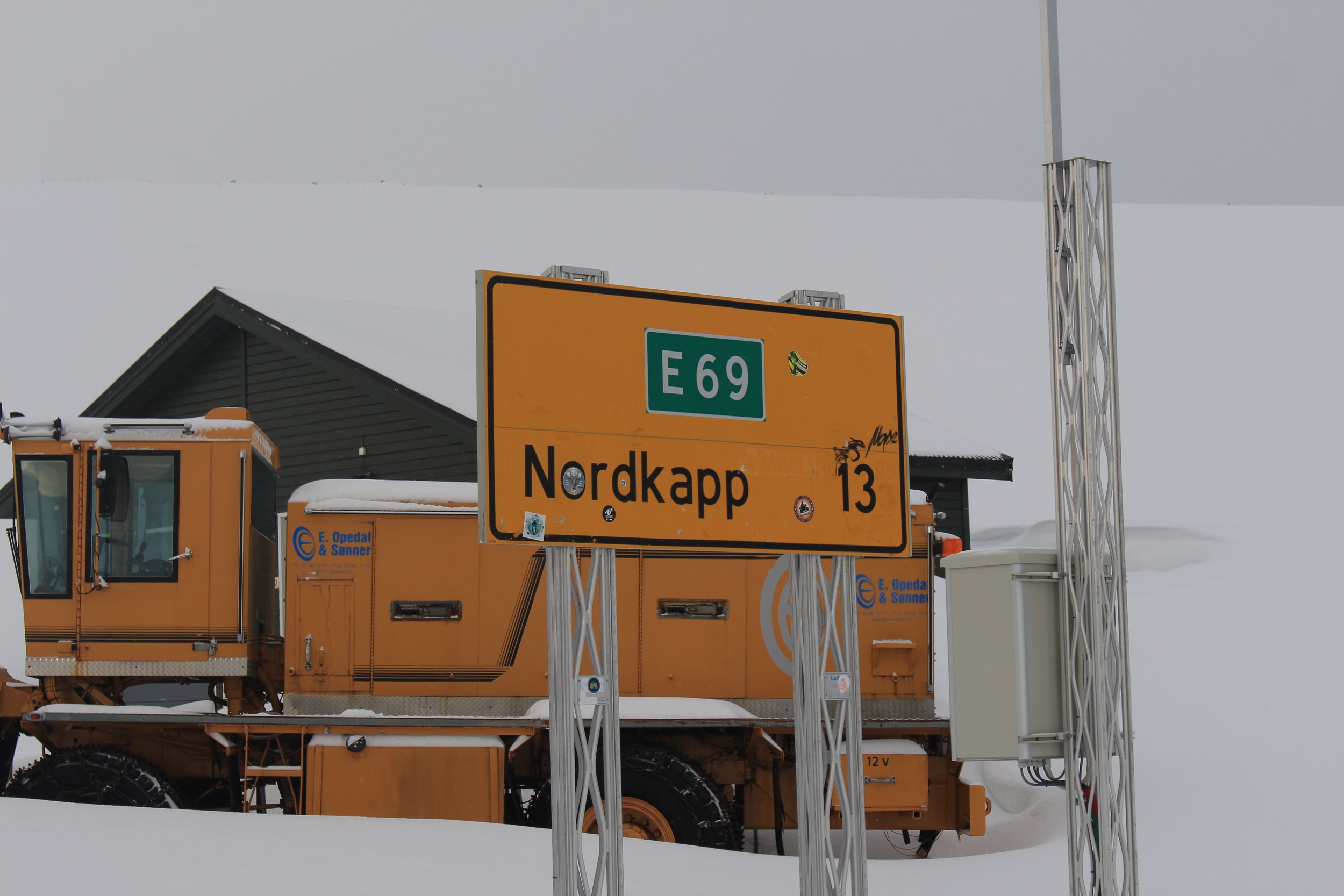Norway - Day by Day
A Bit of History:
Officially the Kingdom of Norway, is a Nordic country in North-western Europe whose territory comprises the western and northernmost portion of the Scandinavian Peninsula. Norway has a total area of 385,207 square kilometres and has an extensive coastline, facing the North Atlantic Ocean and the Barents Sea. The maritime influence also dominates Norway’s climate with mild lowland temperatures on the sea coasts, whereas the interior, while colder, is also a lot milder than areas elsewhere in the world on such northerly latitudes. Even during polar night in the North, temperatures above freezing are commonplace on the coastline. The maritime influence brings high rainfall and snowfall to some areas of the country.
Day 1: The Southernmost Point, Lindesnes Lighthouse
After waking up close to Oslo, we went on the road towards the Lindesness Lighthouse, the Southernmost point in Norway. The road to it was magical and difficult, made by a lot of sharp turns and slide parts leading to dreamy fjords and mystical woods. There, you’re able to visit former German bonkers and a small photo gallery of all the important Norwegian lighthouses carved in the rocks.
We then went back on the road towards Stavanger in order to spend the night close to there. Read a complete and detailed article to learn more about the Southernmost point of Norway, de lighthouse and its History. It’s true that every tourist wants to travel to the Northernmost point (and it is a luxury to have done both) but this was a really beautiful stop!
Day 2: The Pulpit Rock
We woke up very close the the start of the hike towards the phenomenal Pulpit Rock. Also called Preikestolen, it is a steep cliff which rises 604 metres above Lysefjorden. Atop the cliff, there is an almost flat top of approximately 25 by 25 metres on which you’re able to walk in order to push your limits ! Refusing to pay 20 Euros for a simple parking spot, we decided to “cheat the system” and park in between trees a bit further from our campsite.
We then walk towards the beginning of the ascension. Check out our adventure here!
After that, we drove North towards Trolltunga in order to spend the night close to the beginning of the hike, hoping for the weather to eventually get better. Snow didn’t stop us from cooking a delicious vegetable curry and rice.
Day 3: Skjevfossen And Bryygen I Bergen
Not able to hike Trolltunga because of the bad weather, we went back on the road towards Bergen, a city with a UNESCO world’s heritage site since 1979, stopping by the impressive waterfall Skjevefossen, a nice break on the way.
Once in Bergen, we got a map from the tourist centre where was marked a route to explore the city by feet. We started by the world’s heritage site Bryygen, a cute and magical wonder where we felt transported back in time. Also known as Tyskebryggen, it is a gathering of Hanseatic commercial buildings including shops, pubs and restaurants.
We then walked around Bergen and went for diner before heading back on the road in order to park for the night on the parking viewing one of the most magnificent Norwegian fjord.
“I found an amazing and lovely article regarding this site and its ancient people that I would love to share with you. So by clicking the button below you’ll be able to learn more about this UNESCO world heritage site!”
Day 4: Stegastein Lookout And Nigardsbreen Glacier
Waking up next to Stegastein Lookout was magical. The sky slowly cleared out and the view on one of the prettiest Norwegian fjord was breath-taking. Check out my Top 4 on the best Norwegian viewpoints here.
We then went back on the road towards Nigardsbreen Glacier, the second biggest one in the country and one of the most accessible. We drove as close as possible before unfortunately having to park the car and walk to the “parking area” located a couple of meters under the snow! The sun was shinning, the sky was blue and the walk was quite enjoyable before turning into a nightmare..
Indeed, the snow was not enough compact for us not to fall in too deep (sometimes above our knees). Arrived at what was supposed to be the parking area, we had to admit defeat and walk back. Though this was a bummer, the view on the glacier was magical and the weather beautiful. It’s now a good story!
We then went back on the road through a powerful and scary snow storm and found a stop for the night after the mountain pass on a small marina.
Day 5: Atlantic Ocean Scenic Road And Oftenosen
In order to head North, we decided to make a small detour to drive on the Atlantic Ocean Scenic road. Wind and clouds gave a dramatic feeling to the place and brought us back to the natural elements of the ocean.
You can read about my Top 5 Norwegian scenic roads here!After that we drove towards the Oftenosen hike in order to see the biggest wooden chair of the world.
Not the prettiest view, but felt good to hike.
Then, finally, we crossed the border of the Northern Norway, a sign announcing our arrival in the North, though the temperatures were remaining around zero.
We found a spot to spend the night on the parking of a lovely marina, fighting the rain to be able to cook our diner. Marinas were, as you might have found out by now, a great option for us: Not far from the road but isolated enough to not seek attention, they were often equipped with bathrooms, tables and a nice view in the morning.
Day 6 Coastal Scenic Road
We had two choices of routes: Staying on the national E6 which was in a better shape regarding the winter conditions, or driving through the coast on the scenic road said to be one of the 101 most beautiful roads in the world.
The decision taken was obvious: let’s go check it out, and you should do it too. This road is around 600km long and counts several ferries, one which made us cross the Arctic circle! What an adventure!
Day 7: Salstraumen And Narvikfjellen
To finish the drive on the Coastal Scenic Road, we woke up near Salstraumen: the strongest tidal current in the world. The weather was perfect and gave us the chance to admire this phenomenon from the top of the bridge and under. Up to 400 million cubic metres of seawater forces its way through a 3-kilometre long and 150-metre wide strait every six hours. Vortices known as whirlpools or maelstroms up to 10 metres in diameter and 5 metres in depth are formed when the current is at its strongest. At this point, one source claims that the tidal current can reach 40 kilometres per hour
Then, we drove to Narvik under a chaotic snow storm in order to spend the night on the Narvikfjellet, enjoying the view of the city and possibly seeing Northern Lights.
After a little nocturnal hike and no colours in the sky we simply went to sleep, excited for the next days of our adventure. As you can see on this picture, the sky wasn’t pitch black due to the light on the ski slope.
Day 8 Arrival In Lofoten Islands
Unfortunately, in reason of a car accident, the road to the Lofoten Islands remained closed for a while, pushing our departure from Narvik and our chance to see the sunset on the Lofoten Islands. Instead, we saw it while driving to it, which was also fantastic and forced us to stop often in order to capture this magical view.
In order to spend the night with a chance to see the Northern Lights, we parked our car close to the water in complete darkness. Still out of luck!
Day 9: Lofoten Archipelago
Waking up in a snowy paradise, we went back on the road, and it’s under the snow and the wind that we stepped into this fisherman’s world and got our breath taken away (again) by the majestic beauty of the Lofoten Islands.
Lofoten is an archipelago and a traditional district. It has a distinctive scenery with dramatic mountains and peaks, open sea and sheltered bays, beaches and untouched lands.
Its largest town, Leknes, is approximately 169 km inside the Arctic Circle and approximately 2,420 km away from the North Pole, making Lofoten one of the world’s northernmost populated regions.
The islands have for more than 1,000 years been the centre of great cod fisheries, especially in winter, when the cod migrate south from the Barents Sea and gather in Lofoten to spawn. Though lying within the Arctic Circle, the archipelago experiences one of the world’s largest elevated temperature anomalies relative to its high latitude.
Each glimpse you take, each side you look, the landscape is magical, and I don’t regret a second seeing it under this meteorological conditions: it gave it a dramatic twist and a mystical feeling. Now I can only want to come back!
I would recommend this lovely book of poetry written by Rebecca Dinerstein Knight, to get an idea of the feeling you get once being there.
Day 10: Driving North To Alta
That day was mainly made of too many hours of driving in order to get closer to the Northernmost point of the country. We stopped the car close to Alta and spent the night there. Luckily the weather was lovely and quite stable and we even managed to spot some mosses on the way! Here is a link to an interesting and informative article about Norway and its wildlife, some you would love to see and some you’d prefer not encounter
Day 11: A Night In Nordkapp
Driving to North cape was also on the list of Norwegian scenic roads, and what a drive! It felt like we were in a snowy desert, completely isolated, passing houses covered in snow, small harbours, impressive tunnels and gorgeous fjords with a Nordic weather constantly changing.
We had looked up the Norwegian traffic information website to see if the road to the North Cape was open. Unfortunately not for this day but a local told us that probably the next one. We therefore spent the night in Nordkapp, the last town before the northernmost point. The wind was intense and harsh but luckily, the tourist information centre has a tipi equipped to build a fire and be protected from the wind which we took advantage of to cook diner.
Day 12: Nordkapp
As the Norwegian Traffic Informaton’s website said, the roads to north Cape were opened and there will be a “kolone” (meaning a line of car following a snow scraper car all the way to the top) at 11AM. We then drove there, still amazed by the landscape and the the sun shinning on the snow and the fjords, to be in line around 10.30. Unfortunately, the snow scraper coming back from the North Cape informed us that the “kolone” will be cancelled as the weather was changing drastically and dangerously.
Disappointed but understanding, we drove away from Norway towards Finland and its freezing temperatures.


